#black-and-white comic science fiction/horror film
Text
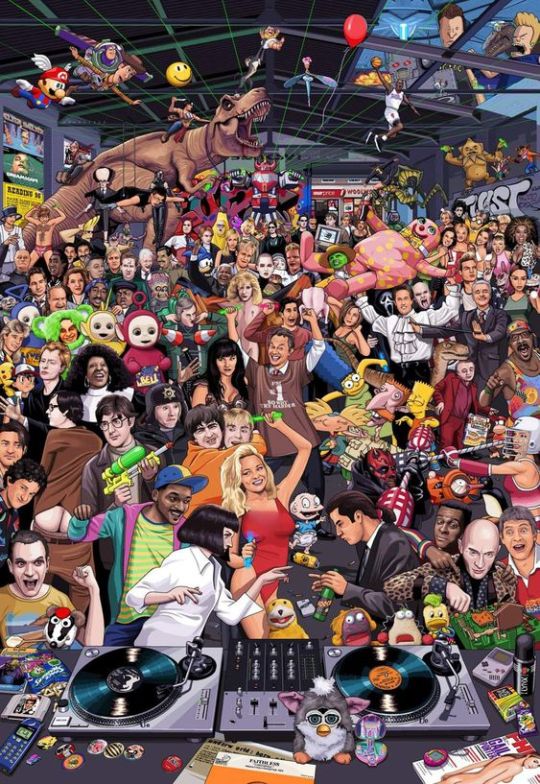
The 1990s was a pivotal decade for geek culture, solidifying many of the trends and franchises that continue to influence pop culture today. Here's an exploration of the various facets of geekdom in the 90s:
Video Games
The 1990s were a golden era for video games, seeing the rise of iconic franchises and gaming consoles.
Consoles and Games:
Super Nintendo Entertainment System (SNES) and Sega Genesis were at the forefront of the early 90s gaming scene. Classics like "The Legend of Zelda: A Link to the Past," "Super Mario World," and "Sonic the Hedgehog" became household names.
The mid-90s introduced the Sony PlayStation and the Nintendo 64. Games like "Final Fantasy VII," "Metal Gear Solid," "Super Mario 64," and "The Legend of Zelda: Ocarina of Time" revolutionized the industry with their storytelling and 3D graphics.
PC Gaming:
The rise of PC gaming brought titles like "Doom," "Quake," "Warcraft," and "Starcraft," which laid the groundwork for modern first-person shooters and real-time strategy games.
The introduction of the CD-ROM allowed for more complex and graphically intense games, expanding the possibilities of game design.
Comic Books and Graphic Novels
The 90s was a transformative period for comics, marked by a combination of innovation and market upheavals.
Marvel and DC Comics:
Marvel experienced a surge in popularity with the introduction of new characters like Deadpool and the significant events like the "X-Men's Age of Apocalypse" and "Spider-Man's Clone Saga."
DC Comics shook the world with storylines such as "The Death of Superman" and "Batman: Knightfall."
Independent Publishers:
The formation of Image Comics by former Marvel artists brought a wave of creator-owned series like "Spawn," "The Savage Dragon," and "WildC.A.T.s."
Vertigo, an imprint of DC, produced critically acclaimed titles such as "Sandman" by Neil Gaiman and "Preacher" by Garth Ennis, pushing the boundaries of mature storytelling in comics.
Science Fiction and Fantasy
The 90s were a golden age for science fiction and fantasy, both in literature and on screen.
Television:
"Star Trek" had a strong presence with "The Next Generation" continuing its success, followed by "Deep Space Nine" and "Voyager."
"The X-Files" became a cultural phenomenon, blending science fiction with horror and conspiracy theories.
"Buffy the Vampire Slayer" redefined the fantasy genre on television, combining teenage drama with supernatural elements.
Movies:
Blockbuster franchises like "Jurassic Park," "The Matrix," and "Men in Black" showcased cutting-edge special effects and imaginative storytelling.
The re-release of the original "Star Wars" trilogy in special editions prepared the groundwork for the much-anticipated prequel trilogy.
Anime and Manga
The 90s saw the global explosion of anime and manga, making Japanese pop culture a mainstream phenomenon.
Anime:
Series like "Dragon Ball Z," "Sailor Moon," and "Pokémon" became immensely popular worldwide, introducing many to the world of anime.
Films by Studio Ghibli, such as "Princess Mononoke" and "My Neighbor Totoro," received critical acclaim and international recognition.
Manga:
Manga series like "Naruto," "One Piece," and "Berserk" began their runs, setting the stage for long-lasting popularity.
The publication of "Shonen Jump" in English brought many of these series to Western audiences.
Role-Playing Games (RPGs)
The 90s were a significant decade for tabletop RPGs, with many classic games being developed and popularized.
Dungeons & Dragons:
The release of the second edition of Advanced Dungeons & Dragons (AD&D) in 1989 carried through the 90s, with campaigns like "Planescape" and "Dark Sun" becoming fan favorites.
Other RPGs:
"Vampire: The Masquerade" by White Wolf Publishing introduced the World of Darkness, a setting that offered a dark, gothic-punk alternative to traditional fantasy RPGs.
The cyberpunk genre was well represented by games like "Shadowrun" and "Cyberpunk 2020," capturing the gritty, high-tech, low-life aesthetic.
Collectibles and Trading Card Games
The 90s witnessed the birth and explosion of collectible card games (CCGs), with "Magic: The Gathering" leading the charge.
Magic: The Gathering:
Created by Richard Garfield and released by Wizards of the Coast in 1993, "Magic: The Gathering" became a groundbreaking and immensely popular game, sparking a new industry of collectible card games.
Pokémon:
The Pokémon Trading Card Game, released in 1996, quickly became a massive hit alongside the video games and TV series, contributing to the global Pokémon craze.
Internet and Technology
The rise of the internet in the 90s played a crucial role in shaping geek culture.
Early Internet Communities:
Bulletin board systems (BBS), forums, and newsgroups like Usenet allowed geeks to connect and share their interests in ways that were never before possible.
The creation of fan sites and the use of IRC (Internet Relay Chat) facilitated the growth of online communities dedicated to various fandoms.
Technology:
The proliferation of personal computers and the advent of the World Wide Web democratized access to information and entertainment, allowing geek culture to flourish and expand globally.
In conclusion, the 1990s were a transformative decade for geek culture, characterized by the rise of influential media, the advent of groundbreaking technology, and the growth of vibrant communities. The era laid the foundation for many of the trends and franchises that continue to shape geekdom today.
#90s tv shows#90s aesthetic#90s fashion#90s anime#90s music#90s nostalgia#1990s#vhs#nineties#90s movies
8 notes
·
View notes
Text
youtube
Tonight's Friday night creature feature is the sci fi alien romp Invasion of the Saucer-Men! Tune in to this frequency to receive this epic adventure!! pop-corn is popping for this thrill ride.
~the wiki below the cut ~
Invasion of the Saucer Men (U.K. title: Invasion of the Hell Creatures; working title: Spacemen Saturday Night), is a 1957 black-and-white comic science fiction/comedy horror film produced by James H. Nicholson for release by American International Pictures. The film was directed by Edward L. Cahn and stars Stephen Terrell, Gloria Castillo, Raymond Hatton and Frank Gorshin.
it was not warmly received.
Variety called the film "a minor entry for the science-fiction trade", noting that it "suffers from poor use of attempted comedy, and is further handicapped by a haphazard sort of yarn which makes film's 69-minutes' running time seem much more".[12]
Harrison's Reports called it "an ordinary program melodrama...The action on the whole is rather unbelievable, but it does have its horrific moments, particularly in the scenes where severed hands are shown creeping about to touch human beings".[13]
In the U.K. (where the film was released under the title Invasion of the Hell Creatures), The Monthly Film Bulletin wrote: "The moments of burlesque of horror melodrama traditions, whether intentional or not, are at least curious. The trickeries are quite convincingly staged, but the film is juvenile in approach and treatment".[14]
On his website Fantastic Movie Musings and Ramblings, Dave Sindelar gave the film a mixed review, saying, "Though it maintains a light atmosphere, it is very lacking in the basic element of a comedy, and that's good jokes. Nonetheless, it's directed with a certain energy, features some truly memorable aliens courtesy of Paul Blaisdell, juggles its three storylines with ease, and in its own way, it may be THE quintessential aliens vs. teenagers movie".[15]
Hans J. Wollstein from AllMovie gave the film a negative review, calling it "claustrophobic at best" and stating that the film "simply isn't funny but is clearly meant to be".[16]
#invasion of the saucer men#Youtube#movies#sci fi#1957#classic movies#science fiction movies#'50s sci-fi#oh shit my draft posted#uh...ok. the early evening sci fi creature feature lol#what this means is there will have to be a midnight horror movie#im glad i didnt say midnight sheesh
0 notes
Photo

Invasion of the Saucer Men Framed Movie Poster Invasion of the Saucer Men. Highest Quality Print, vivid brilliant colors Invasion of the Saucer Men (a.k.a. Invasion of the Hell Creatures, with the working title Spacemen Saturday Night), is a 1957 black-and-white comic science fiction horror film produced by James H. Nicholson for release by American International Pictures Molding:Professional 1" Flat Top Black (solid-wood) Includes glass and metal wire for hanging on your wall. Print: Bonded & Dry-mounted Print on Foam Core. Perfectly flat and smooth finish High Resolution and Quality Full Color Poster Print The prints are bonded to foam core on a hot vacuum press. This bonding gives the print a perfect flat and smooth texture. This process also insures the print will never fold or fade with age or moisture. This wonderful display makes a thoughtful and original gift containing a classic vintage touch yet modern design, allowing it to fit alongside both modern and classic decor. BUY WITH CONFIDENCE. ALL OF MY DELICATE ITEMS ARE SHIPPED WITH A SPECIAL 3 LAYER PROTECTION SYSTEM FOR A GUARANTEED SAFE ARRIVAL..
0 notes
Text
Get Out Themes
Jordan Peele's ground-breaking thriller "Get Out," which tackles the persistent problems of harmful stereotypes in Hollywood, has transformed the horror genre. This blog explores the movie's themes and cliches while showcasing how master storyteller Jordan Peele skillfully incorporates them into the plot. By making a reflection on the lives of Black Americans in a predominately white culture, Jordan Peele's "Get Out" distinguishes the genre of black horror. Its storyline and the demands of its intended audience, which Peele admirably understands, are the keys to its success. Although he developed the movie for a wide audience, he focused on the importance of it for Black people. One frequent horror movie theme is the "first to die." However, "Get Out" defies this expectation by providing a compelling story that goes beyond the usual horror stereotypes. This cliché, in which a person of color possesses mystic wisdom, has drawn a lot of criticism. Peele steers clear of this cliché and develops people with depth. Something very interesting about “Get Out” is the fact that has people that inspire others without conforming to the stereotypical "guide" stereotype. Peele criticizes the cliché of sacrificial black man by pointing out how it has been used in movies like "The Shining." The movie takes a balanced stance on the historically contentious union of Black men and White women while making observations on cultural advancement and the difficulties of interracial partnerships. Some people might have been startled by Jordan Peele's comic experience from programs like "Key and Peele" when he first entered the horror field. However, there were aspects of science fiction and horror in his comedy work as well, demonstrating his skill in navigating various topics. The appropriation and coveting of Black bodies is one of the movie's most overt themes. Every scene and interaction in the film has a meaning because to Peele's painstaking attention to detail."Get Out" is a potent and innovative movie that deftly tackles enduring motifs and issues in Black horror. Jordan Peele's switch from comedy to horror demonstrates both his versatility as a director and his capacity to craft provocative stories that upend conventional wisdom. This blog post has looked at the movie's analysis of historical relationships, critical take on popular horror tropes, and emphasis on the appropriation of Black bodies. "Get Out" is more than simply a horror movie; it's also a social critique that has forever changed the genre.
1 note
·
View note
Photo
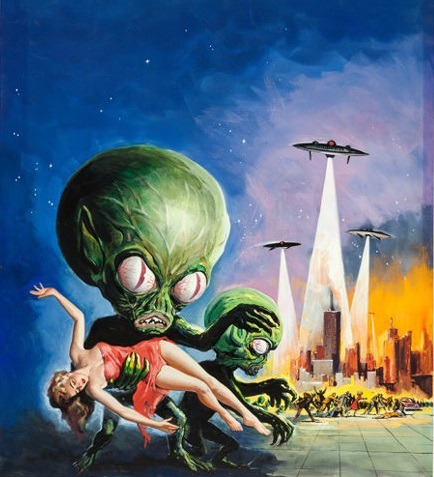
Albert Kallis
#Albert Kallis#sci fi#science fiction#extra terrestrial#art#artwork#painting#poster#cartaz#Invasion of the Saucer-Men#ufo#U.F.O attack#U.F.O#50's#50s#Illustration#Abducted#abduction#1957#black-and-white comic science fiction/horror film
95 notes
·
View notes
Photo


Invasion of the Saucer Men (1957), poster, US
Artist: Albert Kallis (dates unknown).
Unframed: 41 x 27 in. (104 x 69 cm).
Invasion of the Saucer Men (U.K. title: Invasion of the Hell Creatures; working title: Spacemen Saturday Night), is a 1957 black-and-white comic science fiction/horror film produced by James H. Nicholson for release by American International Pictures. The film was directed by Edward L. Cahn and stars Steven Terrell, Gloria Castillo, Raymond Hatton and Frank Gorshin.
#Invasion of the Saucer Men 1957#1957 science fiction horror film#edward l. cahn#steven terrell#gloria castillo#raymond hatton#frank gorshin#1950s#1950s style#1950s hollywood#1950s movies#movie poster#movie memorabilia
17 notes
·
View notes
Note
📃 and 💎 for the hyperfixations ask game
📃 what is the plot of your hyperfixation? and is it a movie, game, show, etc?
UM SO BASICALLY!!! it is a +130 year old science fiction horror short novel and it’s considered the first modern psychological thriller! But there are SO MANY MOVIES! AND GAMES AND COMICS AND SEQUELS AND ALL SORTS OF ADAPTATIONS!
very long story short it’s about Dr Jekyll who is a Highly Respected Wealthy Individual but he’s actually a bit of a bastard 💔 he’s secretly an UNETHICAL AS FUCK mad scientist who wants to separate good from evil (somehow) and destroy free will in favor of ultimate peace of mind (totally not because he’s incredibly emotionally constipated)
and this little asshole motherfucker (affectionate) called Mr Hyde who makes everyone uncomfortable and incurs in AMORAL BEHAVIOR (subtly implied to involve KISSING MEN! Gasp!!) and has been appointed as his sole heir to the surprise of everyone 🤨 but its actually because they’re the same person, like Jekyll straight up created Potion Of Make Me Worse and whenever he takes it he loses every semblance of self control and is just Terrible. he kills a guy.
and because all this is definitely Not Healthy eventually Jekyll has a very painful descent into madness, he starts transforming without the potion because his inner demons have grown stronger than him????? and his identity is shattered his true self blurred etc etc he has all manners of existential crises to the point Hyde starts to embody his Guilt and Self Hatred over, you know, Murder and stuff, begins self harming through him in very twisted ways (destroying his personal belongings mmostly) and after transforming for the last time he toasterbaths 😔 drinking rat poison
anyway all this is revealed post-plot twist and only makes up like 25% of the original book so I’m sorry I spoiled a +130 year old book everyone knows the end of anyways.
SO YEAH IT STARTS AS A REGULAR THRILLER THEN GETS INCREASINGLY TENSER AND MORE DISTURBING AND PHILOSOPHICAL AND FUCKED UP 💚 I ABSOLUTELY LOVE IT
💎 are there any fun facts or trivia that you would like to share?
ummmm okay so there are MANY jekyll and hyde movies but one of the considered “classic” ones is the 1931 mamoulian movie! its loosely based off the book and the plot is actually inspired by the 1920 silent movie with John Barrymore so technically it has very little things in common with the book but. okokok. It was a SUPER EXPENSIVE HOLLYWOOD SUPER PRODUCTION! and it was before the Hays Code so it was STEAMY and they invested so much money into it.
anyway they wanted Barrymore to be Jekyll again since it was his Iconic Role but sadly he didn’t want to, he was already playing Jekyll in the theatrical production. They got hollywood heart throb Frederic March as the main character and he fucking NAILED IT, he won an Oscar for his performance!!!! (He still had to share it with another guy tho… because horror movies were considered Low Brow or some shit?) it was the first horror movie that won an Oscar in fact.
it was also revered for the SFX, Mamoulian refused to use the ”stand still as we put the makeup on and we cut the camera” trick other movies at the time used for transformation scenes so he instead used very heavy multicolored makeup; as you changed the lighting on the set it would look like Fredric’s face was actually changing (it was filmed in black and white). They only cut away to apply prothesis (fake teeth, fake hair, wig). The makeup was very heavy and with each transformation it got uglier to represent Hyde’s descent into monsterhood so he’d go from creepy ape man to creepier ape man. The last stage was SO extreme Fredric got sick and was hospitalized for five weeks, and nearly permanently disfigured AND HIS COSTARS WERE SO FUCKING WORRIED ABOUT HIM BECAUSE THEY THOUGHT HE WOULDNT MAKE IT…
soooo thats the story of how very good SFX almost fucked up Fredric March’s career but fortunately they launched it instead (:
6 notes
·
View notes
Photo

~ Intro to Afrofuturism ~
Afrofuturism, the term used to describe the futuristic presentations or ideas of blackness in visual art and literature, presents itself in many different ways.
The Tate Gallery definition of the movement is the following:
“Afrofuturism is a cultural aesthetic that combines science-fiction, history and fantasy to explore the African-American experience and aims to connect those from the black diaspora with their forgotten African ancestry…the term afrofuturism has its origins in African-American science fiction. Today it is generally used to refer to literature music and visual art that explores the African-American experience and in particular the role of slavery in that experience.” Essentially, the term refers to multiple art forms, and spans across different cultural era’s–all of which link back to rekindlng the lost diasporic influences and stories linked to slavery’s identity-based assimilation. In Ytasha L. Womack’s book entitled “Afrofuturism: The World of Black Sci-Fi and Fantasy Culture” the eagerness and buzz around the initial afrofuturist movement (from within the black community) is succinctly described as a time when “...Discussions of art, human rights, or cultural hallmarks among people of African descent in this vein were new and exciting. There existed a host of writings and creations that were a bit left of the cultural paradigm and hadn’t previously fit neatly into any existing arts movements, and this new space-tinged prism gave them a context.” Although Womack is primarily discussing the science-fiction realm of afrofuturism, the emergence of new black representations and expressions are still applicable to all genres and categories, such as the continually emerging sphere of black horror filmmaking.
Sometimes, through the medium of film, Afrofuturist elements are shown via the expression of black-centred storylines, intentionally unique/unorthodox portrayals of blackness, or through creating narratives that emphasize black characters as “superior”, Or even on an equal playing field as other traditionally celebrated white characters. Without deviations from mainstream media representation, there can be no groundbreaking discourse or shift in opinion regarding the existence of black individuals (in the context of fantasy and science-fiction.) For this exact reason, afrofuturism is considered an important movement within art of all varieties. There is a certain sense of duty attached to shifting the representation and narratives associated with black voices in film (as well as all other art forms). Different examples, which fall into the umbrella category of afrofuturism (or are adjacent to it) include the Black Panther franchise (both the comic book series, and the Marvel film), “Pumzi” a 2009 sci-fi Sundance Film Festival contender, and also, arguably, the black representation within the Star Trek series and its spin-offs, as well as the newest, more ethnically diverse iterations of the Star Wars franchise.
2 notes
·
View notes
Text
Weird Fiction/Cosmic Horror Recommends
In a time of general uncertainty and anxiety, one thing that is certain is that weird fiction/cosmic horror has got your back. If you like to combat your growing sense of existential dread by reading about other people’s growing sense of existential dread, this is a list for you. Where texts and shows are available online, I have included links. Where they are not, I have included links to where they are available to buy.
Books
Agents of Dreamland – Caitlin R Kiernan
Government agents, ritual murders, a doomsday cult and a glitch in NASA’s interplanetary probe all feature in this deeply frightening and deftly written novella that takes classic Lovecraftian tropes and expands on them with mesmerising skill.
Wanderers – Chuck Wendig
When a sleepwalking epidemic hits America, those affected head towards a destination known only to themselves. Desperate to keep their loved ones safe, ‘shepherds’ follow the growing group to protect them on their journey. This is an incredibly rewarding read stuffed full of complex characters, apocalyptic horror and a long hard look at human nature.
Winter Tide – Ruthanna Emrys
After the government raid on Innsmouth, Aphra and Caleb Marsh are the only inhabitants of the town to survive the desert internment camps. When confidential, dangerous magic is stolen from Miskatonic University, the FBI are forced to turn to the last of the Marsh’s for help. An evocative and sympathetic novel that takes the antagonists of Lovecraft’s works and paints them in a new light.
The Fisherman – John Langan
This is considered to be a modern classic of the genre and for good reason. It’s best to go into this one as blind as possible so I’ll just leave you with this little quote: "I know Dutchman's Creek runs deep, much deeper than it could or should, and I don't like to think what it's full of."
Carter and Lovecraft – Jonathan L. Howard
A homicide detective turned Private Investigator finds himself embroiled with the last known descendant of H.P Lovecraft, Emily Lovecraft. When deaths that have an eerie resemblance to the writing of Emily’s ancestor begin to plague the area, the investigator finds himself drawn into a world he thought didn’t exist beyond fiction.
Rosewater – Tade Thompson
The first in an award-winning trilogy that blends science fiction into the weird in near future Nigeria. When an alien biodome manifests in the landscape, a select group of people in the surrounding area begin developing psychic abilities. A winding, disturbing tale with an original setting, voice and characters; this is the perfect read for those looking for a fresh take on the genre.
North American Lake Monsters: Stories – Nathan Ballingrud
I am hugely obsessed with this – Ballingrud uses tropes and characters we are all familiar with and uses them to tell stories that shed light on the plight of rural, poverty-stricken America. He is a masterful author with a true gift for atmospheric writing (‘Late summer pressed onto this small Mississippi coastal town like the heel of a boot. The heat was an act of violence.’) and this collection will appeal to fans of Ligotti and Barron as well as those who are unfamiliar with the genre.
The Ballad of Black Tom – Victor LaValle
This is essentially a retelling of Lovecraft’s The Horror at Red Hook (but without the blatant racism, hooray!). A slow burn, cosmic horror noir featuring a who’s who of the Cthulhu Mythos, for those interested in the genre who do not get on with Lovecraft’s writing or the man himself, this is an excellent way to get all the good stuff without the bad.
Anthologies
A Lonely and Curious Country: Tales from the land of Lovecraft
Seventeen stories about Lovecraftian horrors in the most unusual of places. Lots of these work as mini-sequels to Lovecraft’s original stories so this is a good companion for those familiar with his work.
Lovecraft Unbound
As I’ve said before, Ellen Datlow is a powerhouse of anthology editing. Featuring a great spread of familiar mythos faces and more thematic takes on the genre, Lovecraft Unbound is one of the best collections out there.
Book of Cthulhu
There are a couple of these! All feature some of the best contemporary authors writing weird fiction. Quality of individual stories sometimes varies in Lovecraftian anthologies but that is not the case here. The first is particularly good as it also contains stories from older, more obscure writers who are hard to get in print.
Shadows of Carcosa
Twelve short stories that feature everything from the land of carcosa to the traditionally Lovecraftian setting of the cursed hills of New England. All of these are shorts written by classic writers such as Poe, Stoker, Bierce, Chambers and Blackwood.
Lovecraft’s Monsters
Another collection edited by Datlow. This one is particularly fun as it features illustrations, as well as a story by Neil Gaiman. Lovecraft’s Monsters is amongst my favourite of the anthologies as it is based solely around the creatures that crawl and squirm through the mythos. It’s also available as an audiobook!
Children of Lovecraft
Fourteen short stories including authors like Stephen Graham Jones, Orrin Grey, Caitlin R. Kiernan and Livia Llewellyn. Full of body horror, dread, surrealism and one of the best opening sentences to any short story.
She Walks in Shadows
A monumental, fascinating collection comprised of exclusively female authors. Offering a long overdue look at and development of the female aspects of the mythos, this collection gives a voice to the previously unheard. For those looking for a diverse, original and often deeply disturbing reading experience, this is your anthology.
Available online for free
The Lovecraft Ezine has a great archive here of all its previous issues
Weird Fiction Review is an excellent resource for online fiction – both excerpts from books and stand-alone short stories.
The Online Books page has direct links to the issues of Weird Tales magazine published between 1923 – 192.
TOR.COM is an amazing resource for all kinds of science fiction and fantasy shorts. This is a link specifically to Lovecraftian fiction. There’s also lots of interesting things to read under the tag cosmic horror here.
Graphic Novels
Fatale - Sex, violence, cults, cosmic horror, imaginative period settings and gorgeous artwork. Fatale is one of the best comics set in the mythos out there.
Locke and Key - Many of you will be familiar with Joe Hill and Gabriel Rodriguez’s hugely popular (and now televised) series focused on a house above a portal to the plains of Leng.
Harrow County - Creepy, rural-based, folk horror series centred on a young woman who finds herself to be joined to the forest and the land in ways she could never have imagined.
The Squidder - A postapocalyptic Lovecraftian mess, I have included this because it is worth buying for the artwork alone. Ben Templesmith is an acquired taste but an incredibly talented illustrator whose work is uniquely suited to the mythos.
I have talked about these several times before but it is always worth checking out I.N.J Culbard’s graphic novel adaptations of Lovecraft’s stories, as well as the two anthologies that were released several years ago.
***
Films – Cosmic Horror
I have linked to the trailers for each of these, some are classics you will know, some are new.
The Colour out of Space
Die Fabre
The Dunwich Horror
The Endless
Event Horizon
The Void
Europa Report
Black Mountain Side
Films – Folk Horror
The Ritual
They Remain
The White Reindeer
Night of the Demon
Apostle
More generally, some good online resources for old/weird/out of print books are
Project Gutenberg – an online library of over 60,000 books in the public domain
Internet Archive – a great resource for obscure books (particularly historical)
Europeana – items from Europe’s galleries, museums, libraries and archives
Digital Public Library of America – similar to Europeana, but for America
Classic Literature – lots of 19th century gothic goodness in particular, but great for all the classics too!
And when it all gets too much and you feel like being your own creeping dread, Here is a link to a fun game where you can be the rats in the walls.
#this is an extremely long post y'all my apologies#lovecraft#weird fiction#book recommends#eldritch reads#cthulhu mythos#film recommends#graphic novels#lovecraftian#hp lovecraft
593 notes
·
View notes
Text
Vintage Shows to Watch While You Wait for the Next Episode of WandaVision - The 50s
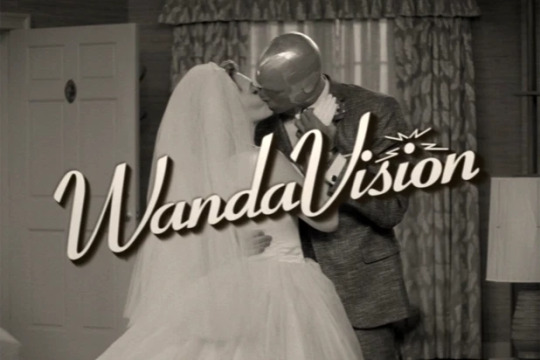
So the first three episodes of Wandavision have dropped onto Disney Plus and like me you’re probably already obsessing over it. Also like me you’re probably jonesing for another fix while waiting for more as the episodes only come out once a week.
But never fear, we literally have decades of cheesy comedy sitcoms to sift through to keep us entertained during quarantine. Along with the occasional action and/or horror stuff if you’re so inclined. So if you’re trying to decide where to start I’ll be making short lists for each decade that coincides with each episode.
1. I Love Lucy (1951- 1957)

The granddaddy of all American television sitcoms staring the first lady of comedy herself, Lucille Ball. While not the first sitcom to air, tv had been kicking around since the late 40s, this show did pave the way for many technical innovations for the new medium both on and behind the scenes. As such Elisabeth Olsen cited Miss Ball’s work as one of her inspirations for her role as Wanda in the series, as do many a woman entering into the comedic field.
Also the show is just flat out funny. One of those rare 50s sitcoms that manages to overcome some of it’s more dated aspects through shear force of personality and peak comedic screwball antics. The only downside is you have to have Hulu to watch it as the copywrite is tightly controlled even to this day.
2. Amos ‘n Andy (1951-1953)

The 1950s television landscape was overwhelemingly white. It’s no secret that POC had a hard time finding work in the field of entertainment let alone be the stars of the show. Amos ‘n Andy, a spin off of the earlier same titled radio show, was one of, if not the first black led shows on television and so deserves a mention just for that alone.
Now I will not act as if this show is perfect or ahead of it’s time. The series was controversial even during its day for is depictions of racial stereotypes. Eventually the series was canceled because of protests from the NAACP despite being very popular in the ratings. However I’m a full believer that history should be observed and talked about in order to progress further so check out an episode or two on youtube and decide for yourself if it’s worth remembering or not.
3. The Adventures of Superman (1952 - 1958)

Ok, not a sitcom, but as we all know, Wandavision isn’t just a sitcom it’s also a superhero show and this is one of the first tv series in this genre. It and the Fleischer Superman cartoons from the previous decade helped to make the juggernaut industry that we know today.
Plus Superman did an official crossover with I Love Lucy, seriously.

4. The Adventures of Ozzie and Harriet (1952 - 1966)

Hardly anyone talks about it today, but Ozzie and Harriet is the longest running sitcom to date. It's Always Sunny in Philadelphia being the only other show threating to up seat it come next year. However the two sitcoms couldn’t be any more different.
The series stared the real life Nelson family who had got their start in radio as comedians and singers who then crossed over into tv. While the show was completely scripted it tried to hew as close to real life as possible, kicking off American’s obsession with platonic voyeurism. Much in the way Wandavision has the meta storyline of being watch in their own home.
5. Father Knows Best (1954 - 1960)

Another radio to television entry here, however the series drastically changed the main character during the transition. During the 40s radio sitcoms were very biting and sarcastic, often either going the complete surreal screwball route or were satires of the day. This fell out of favor as tv became more dominated by commercials and advertisers feared offending their potential costumers. So things were greatly toned down as the decade progressed.
Therefore when Father Knows Best hit the small screen gone was the rude and domineering dad and in his place we got the very model tv father; affable, gentle, loving, devoted, and very congenial. All traits we love to see in Vision some six decades later.
6. The Honeymooners (1955 - 1956)

I physically can not make a recommendation list of 50s sitcoms and not mention The Hoonymooners. I just can’t. It’s one of the greatest sitcoms ever made and hugely influential. So much so that The Flintstones ripped off the series whole sale to the point that Jackie Gleason threatened to sue Hanna-Barbera. However there’s little such influence in Wandvision.
See what made The Honeymooners stand out at the time and what gave it such longevity is the fact that the main characters were poor. They lived in a cramped and over crowded sparsely furnitured one bedroom apartment in Brooklyn. They owed bills, they dressed plainly, they worked long hours at low paying jobs, and they were often dirty from said work.
Much like how Wandavision will pull back the curtain a little to see the reality hiding underneath their suburban utopia, so too did The Honeymooners defy the the ‘perfect American dream’ that was soled on tv during the 50s to show us the trauma of poverty and the only thing that you can do when you find yourself trapped within that reality, laugh.
7. Leave it to Beaver (1957 - 1963)

You can not get any more quintessentially 50s than Leave it to Beaver. The series has become synonymous with the decade and it’s take on the ideal American family life to the point where it’s become a punchline of numerus jokes criticizing the values and attitudes of the era.
Does it really deserve such mockery? Who knows. I think one needs to watch it for themselves to decide. However it slots right into the aesthetic that the first episode of Wandavision is trying to recreate and it must have been popular for a reason, right?
8. The Many Loves of Dobie Gillis (1959 - 1963)

We featured wholesome family sitcoms and screwball comedies with married folks but we haven’t covered any surrealist humor yet, and Wandavision is seeped into that sort of stuff. That’s because there really isn’t a lot of fantasy in most 50s sitcoms. So while the trappings for episode one of Wandavision is very 50s the effects and premise is more 1960s.
That’s where Dobie Gillis comes into play. Like Wandavision, The Many Loves of Dobie Gillis is based off a comic book, or comic strip rather. However that comic was very down to earth and tame compared to the tv show. More fondly remembered as the inspiration for Scooby Doo a decade later, Dobie Gillis quickly transformed from a typical coming of age show about teenagers to a surreal, sarcastic, tongue in cheek comedy, complete with get rich quick schemes, spys, bongos, and a giant chicken.
9. Bonanza (1959 - 1973)

Yeah, I know all of y’all are judging me right now. “A western in a sitcom/sic-fi list? What are you thinking?” Well one really can’t talk about 50s television and not mention westerns of some sort. They permeated all mediums and dominated the cultural air waves. And Bonanza is far more than just a western.
Bonanza is literally every thing. It’s every genre at once; western, historical drama, sitcom, action adventure, satire, crime drama, soap opera ,and yes even the occasional foray into science fiction, albeit with a more Jules Vern take than a typical spaceman theming.
If Wandavision is a melding pot of seemingly disconnected genres then it’s because Bonanza paved the way with it’s similar breakage of formula.
10 The Twilight Zone (1959 to 1964)

Yeah, you probably knew this was coming. When not being a homage to sitcoms Wandavision is a downright horror movie, but not one with gore and mindless monsters. Rather the show evokes old school surrealist horror, like that employed in the famous (or infamous) Twilight Zone.
What you probably didn’t know is that we have the I Love Lucy show to thank for it. See Lucille Ball and her then husband Desi Arnaz had created their own production company in order to make I Love Lucy. This production company, Desilu Productions, is responsible for picking up Rod Sterling’s pilot and producing The Twilight Zone.
Runner Ups
Good shows that have little to do with Wandavision but are good anyways.
What’s My Line (1950 - 1967)
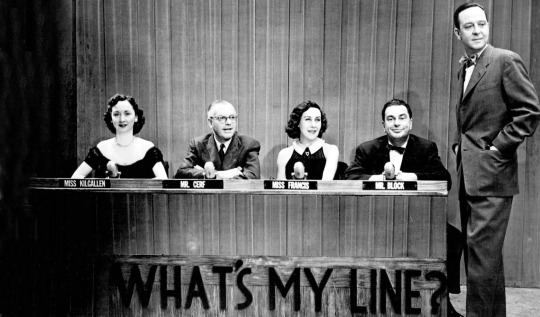
Just a really fun game show. Stars of the day would sometimes appear on it including many of the sitcom comedians listed above
Have Gun - Will Travel (1957 - 1963)
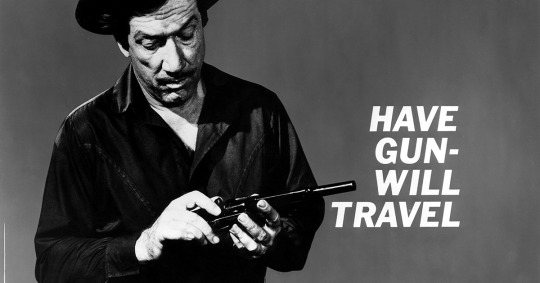
One of the very few pure westerns that I can tolerate. The lead actually cares about people and justice and will stand up to bigots.
Dennis the Menace (1959 - 1963)

While I have fond memories of the 90s film, I thought it was a tad redundant to put on the list when there’s already Leave it to Beaver.
So there’s the 50s list. On Wednesday I’ll post a list for the 60s and cover some of the more obvious stuff Wandavision was paying homage to.
32 notes
·
View notes
Text
Afro-Futurist Reading List Vol 2.
Afro Futurism Reading List Vol 1:
Afro Futurism Reading List Vol 2:
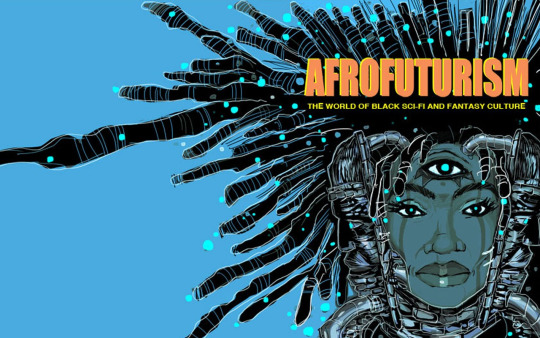
Black Speculative Fiction Breakdown by Genre
African Fantasy (early myths and fables from the continent):
Forest Of A Thousand Deamons: A Hunter's Saga by Daniel O. Fagunwa
The Palm Wine Drinkard by Amos Tutuola
My Life In The Bush Of Ghosts by Amos Tutuola
Simbi and the Satyr of the Dark Jungle by Amos Tutuola
The Brave African Huntress by Amos Tutuola
Feather Woman of the Jungle by Amos Tutuola
Ajaiyi and his Inherited Poverty by Amos Tutuola
The Witch-Herbalist of the Remote Town by Amos Tutuola
Utopia (alternate histories written during the jim crow & antebellum eras):
Blake Or The Huts Of Africa by Martin Delany
Imperium In Imperio by Sutton E Griggs
Light Ahead For The Negro Edward A Johnson
One One Blood by Pauline Hopkins
Black No More by George Shuyler
Lord Of The Sea by MP Sheil
Space Opera (far future sci fi worlds of interplanetary travel):
Nova by Samuel R Delany
Stars In My Pocket Like Grains Of Sand by Samuel R. Delany
Binti Trilogy by Nnedi Okorafor
An Unkindness Of Ghosts by Rivers Solomon
Midnight Robber by Nalo Hopkinson
Rayla 2122 Series by Ytasha Womack
Trouble On Triton by Samuel R. Delany
Babel 17 by Samuel R Delany
Empire Star by Samuel R Delany
The Galaxy Game by Karen Lord
The Best Of All Possible Worlds by Karen Lord
Ancient Ancient by Klini Iburu Salaam
Escaping Exodus by Nicky Drayden
Ascension: Tangled Axon by Jacqueline Koyanagi
Teleportality by T Cisco
Nadine's Bible Seris by T Lindsey-Billingsley
Nigerians In Space Series by Deji Bryce Olukotun
Aliens (alien encounters):
Lilith's Brood Trilogy by Octavia Butler
Lagoon by Nnedi Okorafor
Rosewater Trilogy by Tade Thompson
The Lesson by Cadwell Turnbell
The Wave by Walter Mosley
Dystopia (oppressive futures and realities):
Friday Black by Nana Kwame Adjie Brenyah
Riot Baby by Tochi Onyebuchi
War Girls Series by Tochi Onyebuchi
Sunshine Patriots by Bill Campbell
Gunmen's Peace by Milton J Davis
Dragon Variation by T Cisco
Experimental (literary tricksters):
The Ravicka Series by Renee Gladman
The Freedom Artist by Ben Okri
The Structure Of Dante's Hells by LeRoi Jones
The House Of Hunger by Dumbudzo Marachera
Black Sunlight By Dumbudzo Marachera
Yellow Back Radio Broke Down by Ishmaeel Reed
The Last Days Of Louisiana Red by Ishmaeel Reed
The Sellout by Paul Beatty
Koontown Killing Kaper by Bill Campbell
The African Origin Of UFOs by Anthony Joseph
Quantum Black Futurism(Theory & Practice Volume 1) by Rasheeda Philips by Rasheeda Philips
Spacetime Collapse: From The Congo to Carolinas
Spacetime Collapse II: Community Futurisms by Rasheeda Philips
consent not to be a single being trilogy by Fred Mot
Post-Apocalyptic (worlds falling apart):
The Purple Cloud by MP Shiel
Dhalgren by Samuel R Delany
The Parable Series by Octavia Butler
Brown Girl In The Ring by Nalo Hopkinson
Dying Earth (far future post-apocalyptic worlds + magic):
The Broken Earth Trilogy by NK Jemisin
The Einstien Intersection by Samuel R. Delany
The Jewels Of Aptor by Samuel R. Delany
The Fall Of The Towers Trilogy by Samuel R. Delany
Who Fears Death by Nnedi Okorofor
The Book Of Phoenix by Nnededi Okorofor
The Prey Of Gods by Nicky Drayden
Alternate History (alternate timelines and what-ifs):
Mumbo Jumbo by Ishmael Reed
Everfair by Nisi Shawl
The Underground Railroad by Colson Whitehead
The Water Dancer by Ta-Nehisi Coates
The Insh'Allah Series by Steven Barnes
Ring Shout by P Djelia Clark
A Dead Djinn In Cairo by P Djelia Clark
The Black God's Drum by P Djelia Clark
Washington Black by Esi Edugyan
Pimp My Airship: A Naptown By Airship Story by Maurice Beaudice
The Dream Of Perpetual Motion by Dexter Palmer
Pym by Matt Johnson,
Dread Nation Series by Justina Ireland
From Here to Timbuktu by Milton J Davis
High Fantasy (magical kindoms and high adventures):
The Neveryorn Series by Samuel R. Delany
Black Leapard Red Wolf by Marlon James
The Deep by Rivers Solomon & Clipping
Imaro Series by Charles R. Saunders
The Children Of Blood & Bone by Tomi Adeyemi
The Children Of Virtue & Vengeance by Tomi Adeyemi
The Sorcerer Of The Wildeeps by Kai Ashai Washington
A Taste Of Honey by Kai Ashai Washington
Beasts Made Of Night Series by Tochi Onyebuchi
A Place Of Nights: War & Ressurection by Oloye Karade,
Woman Of The Woods: A Sword & Soul Epic by Milton J Davis
Temper by Nicky Drayden
They Fly At Ciron by Samuel R. Delany
Anansi Boys by Neil Gaiman
The House Of Discarded Dreams by Etakterina Sedia
Magic Realism (literary naturalism with surreal, dreamlike, and mythic imagery):
The Echo Tree & Other Stories by Henry Dumas
The Kingdom Of This World by Alejo Carpentier
General Sun My Brother by Jacques Stephen Alexis
The Famished Road Series by Ben Okri
The New Moon's Arms by Nalo Hopkinson
The Salt Roads by Nalo Hopkinson
Montaro Caine by Sydney Portier
Mama Day by Gloria Naylor
Redemption In Indigo by Karen Lord
Mem by Bethany C Morrow
Urban Fantasy (modern citybound fantasy):
The City We Became by NK Jemisin
Sister Mine by Nalo Hopkinson
The Chaos by Nalo Hopkinson
The Intuitionist by Colson Whitehead
Blue Light By Walter Mosley
Fire Baptized by Kenya Wright
Time Travel (stories unstuck in time):
Kindred by Octavia Butler
Version Control by Dexter Palmer
Recurrence Plot by Rasheedah Phillips
Horror (nightmare, terrors, and hauntings):
Beloved by Toni Morisson
African Immortals by Tananarivue Due
Fledgling by Octavia Butler
The Gilda Stories by Jewelle Gomez
Lakewood by Meggan Giddings
The Ballad Of Black Tom by Victor Lavalle
Lovecraft Country by Matt Ruff
The Changeling by Victor Lavealle
Zone One by Colson Whitehead
The Between by Tananarive Due
The Good House by Tananarive Due
Ghost Summers: Stories by Tananarive Due
Unhollowed Graves by Nunzo Onho
Catfish Lullaby by AC Wise
Young Adult (books for young adults):
Akata Witch Series by Nnedi Okorofor
Zarah The Windseeker & The Shadow Speaker by Nnedi Okorofor
Long Juju Man by Nnedi Okorofor
Ikenga by Nnedi Okorofor
Tristan Strong Series by Kwame Mbalia
A Song Below Water by Bethany C Morrow
Daughters Of Nri by Reni K. Amayo
A River Of Royal Blood by Amanda Joy
47 by Walter Mosley
Comics (graphic storytelling)
George Herriman Library: Krazy & Ignatz (1919-1921) by George Herriman
The Boondocks Complete Collection by Aaron Mcgruder
Birth Of A Nation by Aaron Mcgrudger, Reginald Hudlin, & Kyle Baker
Prince Of Cats by Ronald Wimberly
Concrete Park by Erika Alexander & Tony Puryear
Incognegro Series by Matt Johnson
Your Black Friend & Other Stories by Ben Passmore
Bttm Fdrs Ezra Clayton Daniels & Ben Passmore
Sports Is Hell is Ben Passmore
LaGuardia by Nnedi Okorofor & Tana Ford
Bread & Wine: An Erotic Tale Of New York by Samuel R Delany & Mia Wolff
Empire by Samuel R Delany & Howard Chaykin
Excellence by Brandon Thomas
Bitteroot by David F Walker, Chuck Brown & Sanford Greene
Black by Kwanza Osajyefo
Niobe: She Is Life by Amandla Stenberg & Sebastian A Jones
Black Panther by Christopher Priest
Black Panther by Reginald Hudlin
Black Panther by Ta-Nehisi Coates
Shuri by Nnedi Okorofor
World Of Wakanda by Roxane Gay
Truth: Red, White, & Black by Kyle Baker
House Of Whispers by Nalo Hopkinson & Neil Gaiman
Naomi by David F Walker, Brian Micheal Bendis, & Jamal Campbell
Far Sector by NK Jemison & Jamal Campbell
Short Stories (collections by single authors):
Driftglass by Samuel R Delany,
Distant Stars by Samuel R Delany
Bloodchild & Other Stories by Octavia Butler
Unexpected Stories by Octavia Butler
Falling In Love With Hominids by Nalo Hopkinson
Skin Folk by Nalo Hopkinson,
Kabu Kabu by Nnedi Okorofor,
How Long Til Black Future Month? by NK Jemisin
Nine Bar Blues by Sheree Reneee Thomas
Anthologies (collections from multiple authors)
Dark Matter edited by Sheree Renee Thomas
So Long Been Dreaming edited by Nalo Hopkinson
Conjure Stories edited by Nalo Hopkinso
Whispers From The Cotton Tree Root: Caribbean Fabulist Fiction edited by Nalo Hopkinson
Afro SF: Science Fiction by African Writers edited by Wor. W. Hartmaan
Stories For Chip: A Tribute To Samuel R Delany edited by Nisi Shawl
Octavia's Brood: Science Fiction Stories From Social Justice Movement edited by Adrienne Marie Brown & Walidah Imarisha
Mothership: Tales of Afrofuturism and Beyond edited by Bill Campbell
The City: Cyberfunk Antholoy edited by Milton J Davis
Steamfunk edited by Milton J Davis
Dieselfunk edited by Milton J Davis
Griots: A Sword & Soul Anthology by Milton J Davis & Charles R Saunders
Griots: Sisters Of The Spear by Milton J Davis & Charles R Saunders
Non-Fiction (histories, essays, and arguments)
Afrofuturism And The World Of Black Sci-Fi & Fantasy Culture by Ytasha Womack
Afrofuturism 2.0: The Rise Of Astral Blackness edited by Reynaldo Anderson & Charles E Jones
The Black Imagination: Science Fiction, The Future, and The Speculative by Sandra Jackson & Julie E Woody-Freeman
Afro-Futures & Astral Black Travel by Juice Aleem
The Sound Of Culture: Diaspora & Black Technopoetics by Louis Cude Soke
Black Utopia: The History Of An Idea From Black Nationalism To Afrofuturism by Alex Zamalin
Afrouturism Rising: The Literary Pre-History Of A Movement by Isiah Lavendar III
A Pure Solar World: Sun Ra & The Birth Of Afrofuturism by Paul Youngquist
Where No Black Woman Has Gone Before: Subversive Poryrals In Speculative Film & TV by Diana Adesola Mafe
Black Kirby: In Search Of The Motherbox Connection by John Jennings & Stacey Robinson
Super Black: American Pop Culture & Black Super-Heroes by Adilifu Nama
Black Space: Imagining Race In Science Fiction Film by Adilifu Nama
Black Super-Heroes, Milestone Comics, And Their Fans by Jeffery A Brown
Emergent Strategy: Shaping Change, Changin Worlds by Adrienne Marie Brown
*cover image from Ytasha Womack’s “Afrofuturism: The World Of Black Sci-Fi & Fantasy Culture”
(please post anything I might have left out in the comments)
#afrofuturism#book list#books#lists#reading#comics#afro horror#afro surrealism#afro fantasy#samuel r delany#octavia butler#nnedi okorafor#nalo hopkinson#nk jemisin#victor lavalle#nisi shawl#tomi adeyemi#marlon james#amos tutuola#tananarive due#ben okri#tad thompson#literature#novels#nicky drayden#colson whitehead#ta-nehisi coates#poc in genre#afrofuturism lists#afro futurism
185 notes
·
View notes
Text
Research: Project Finish
Tim Sale
Tim Sale is a famous comic book artist, who had worked in several titles along with the writer Jeff Loeb, including Batman, Spider-Man, Superman, Daredevil, and many others.
Tim Sale was born in may of 1956, in New York, where he studied visual arts, spent a good time of his life in Seattle, and today he lives in California.
For some years he drew his art privately, only to please himself. When he found himself working at a fast food in his late twenties, however, he decided to try to sell some of his work. This led to an association with Thives’ World Graphics, a fantasy anthology series, where he illustrated stories.
What most marks his work is the dramatic aspect that he manages to obtain in the characterization of his characters and in the scenarios he creates, making the stories unique and immortalizing the characters.
The union of Sale’s art with Loeb’s engaging narrative has become the perfect marriage for mysterious plots.
One of the most striking characters worked by Sale was Batman, which he drew “The Long Halloween”, “Dark Victory” and “Halloween”. He was able to fully transfigure the dark aura of Gotham and his Dark Knight. He also worked with Superman in the saga “ Superman for All Seasons”.
Both of The Long Halloween and For All Seasons are what is known as “Year one” comics. These works take their heroes back in time to their earliest days of crime fighters.
His main tool is watercolor, which he uses with mastery. Sale's palette of colors is something really impressive, always drawing and painting his characters very delicately, and calmly. His style is very cartoonish, although this does not diminish his art in any way, on the contrary, his style is very unique and characteristic.

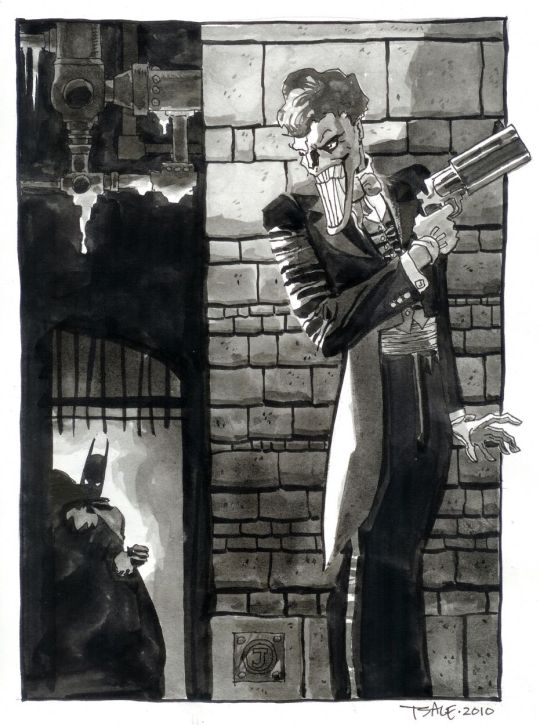



Pedro Franz
Is a Brazilian comic book artist, who was born in Santa Catarina and has a degree in design.
He has been publishing several comic books and participating in exhibitions in Brazil and abroad. As an illustrator, he has published works several magazines and books, and regularly collaborates with the Piauí magazine. As a graphic designer, he is a contributor to the Par (Ent) Esis platform. He has comics translated and published in English and Spanish, and has good international recognition, thanks to his publications.
But what is most impressive in Pedro's art, perhaps is his intensive use of colors. Mixing various shades of different colors, mixing different compositions. In addition to sometimes using characters from pop culture, with his elaborate style.
Despite liking traditional comics, he has always published and worked for national publishers, often with authorial works.
Perhaps his best known work, which was even published in the United States is the comic “Suburbia”.
Suburbia tells the story of Conceição, a girls daughter of enslaved rural workers, who flees to Rio de Janeiro in the early 1990s. In the city, Conceição begins to work as a cleaner and to get involved in the world of funk, slums and poverty.
His drawings are extremely surreal, not exactly following a traditional way of making comics, with several images spread across the page, with different shapes and sizes, with extremely strong colors, mainly valuing blue, purple, yellow and red, as his main colors.
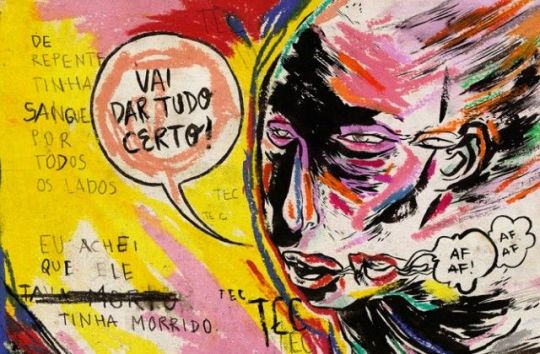
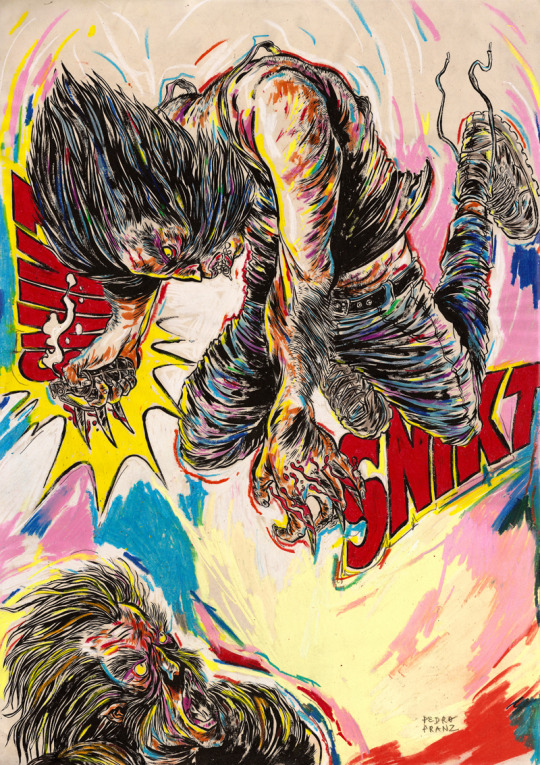
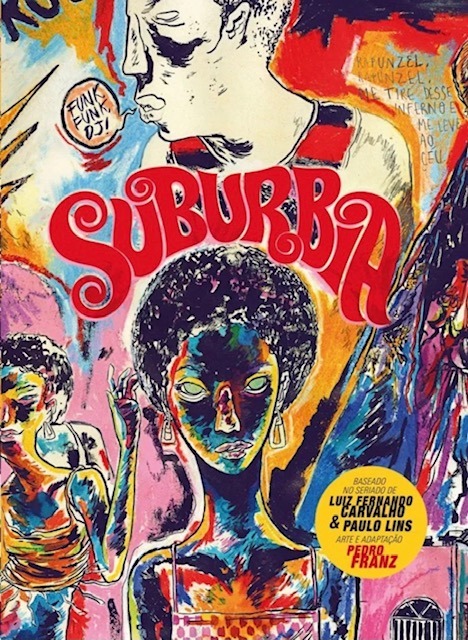


Richard Corben
Richard Corben was one of the contributors of elevating the comics to the category of Art, and of its unparalleled style of great influence among many current artists.
Richard Vance Corben was born in Missouri, United States on October 1940, in a family of farmers in the middle west ( where he started reading comics), and lived in Kansas City. There he studied Fine Arts, got married, had a girl and started working in local cinematography animation company. At the same time, he started to create and publish some underground fanzines. From the begging it was clear that he was interested in science fiction, eroticism, and total rejection of institutions ( the Army, the Church, etc), mixed with a lot of humor.
At a young age, Corben was an aficionado of bodybuilding, just like everyone who was interested in a persons aesthetics. The first character that he created, was Rowlf, a dog who took on a human form. In the beginning of the 1970s he amplified his work ( and his fame) in some underground magazines. And in 1971 he started working for the Heavy Metal publisher where he created one of his most famous characters, Den a large muscular man, who was always naked, and always after some adventure.
Corben has a very particular style, with unsettling mixture of caricatured, often satirical grotesque and intense,convincing realism. Never before had such wildly cartoonish worlds proved so convincing.
Also he can handle an exponentially higher standard because of his ability to use colour to show the effect of light on whatever he’s depicting. The way that he mixes light and colors in certain panels to differentiate those elements from each other, is something to admire.
Corben worked in a few mainstream comics, he always preferred to work with authorial works or working in specific themes like fantasy and science fiction comics and not so much on superheroes.
But probably the most famous mainstream comic that ever worked was the character Hellboy, along with writer Mike Mignola.
Hellboy is a series of comics that has a lot of mysticism, Norse mythology, horror and monsters. Something Corben certainly agreed to do, without thinking twice.
Richard Corben is one of my favorite artists, with a style that is perhaps not as realistic as an Alex Ross for example, but the humor and beauty that he puts in his characters is very unique.
Corben died on December 2, 2020, leaving a great legacy, for the world of comics and arts, with a very unique style and extremely stunning worlds.
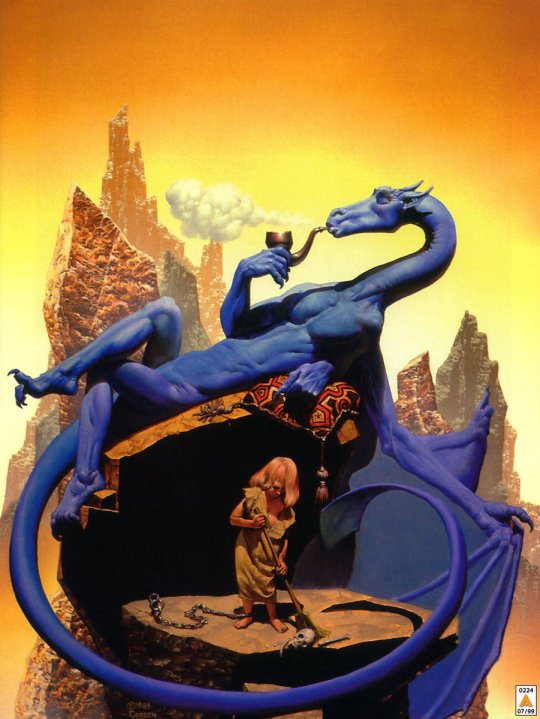
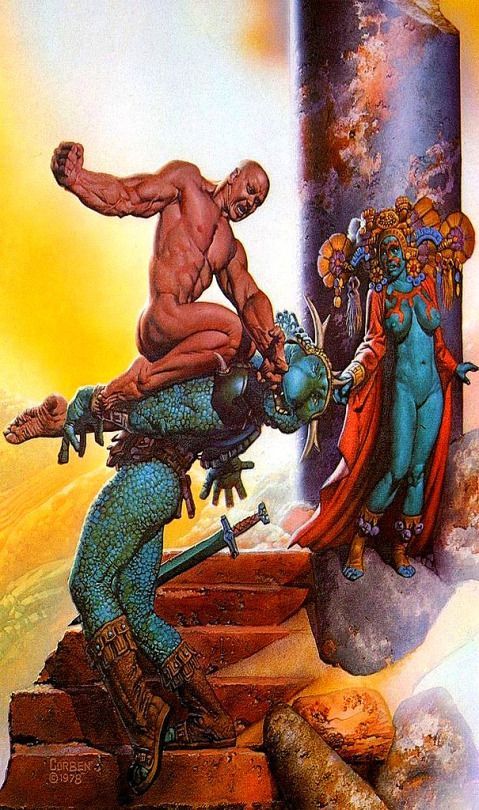
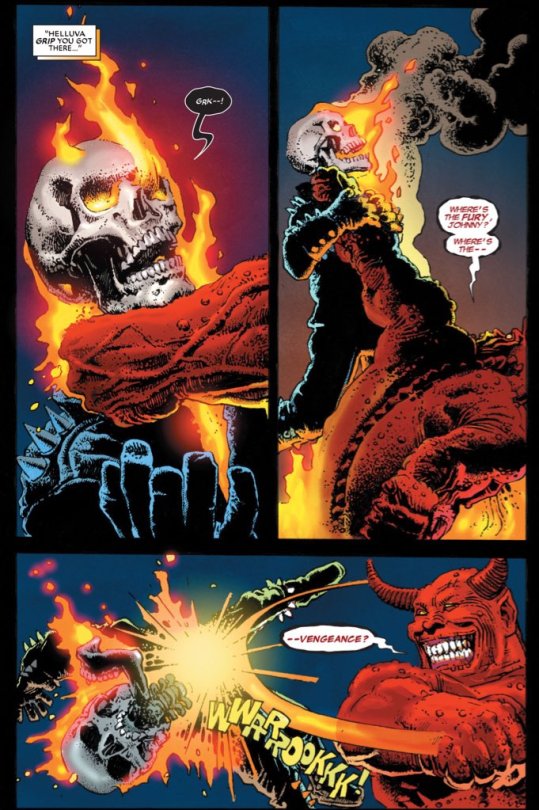
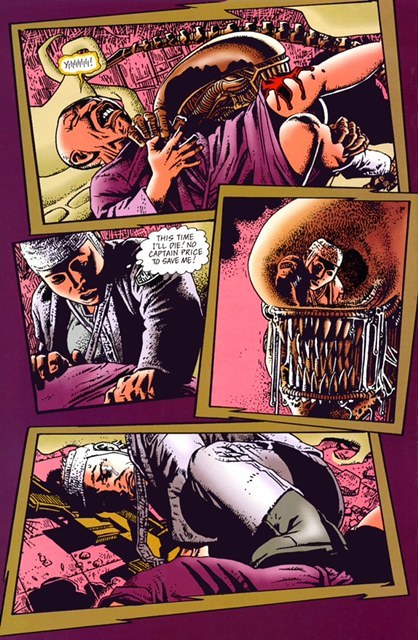
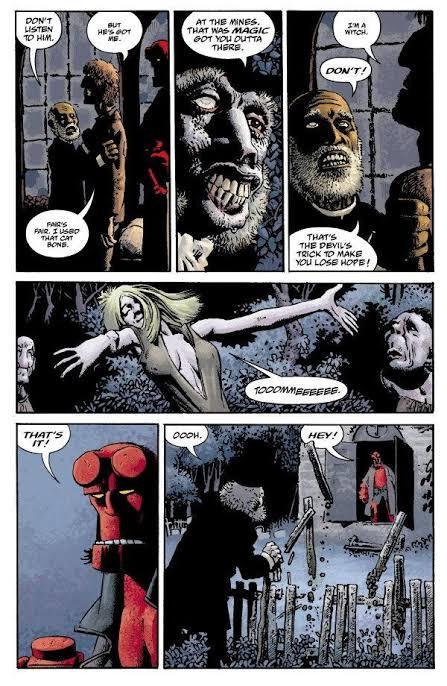
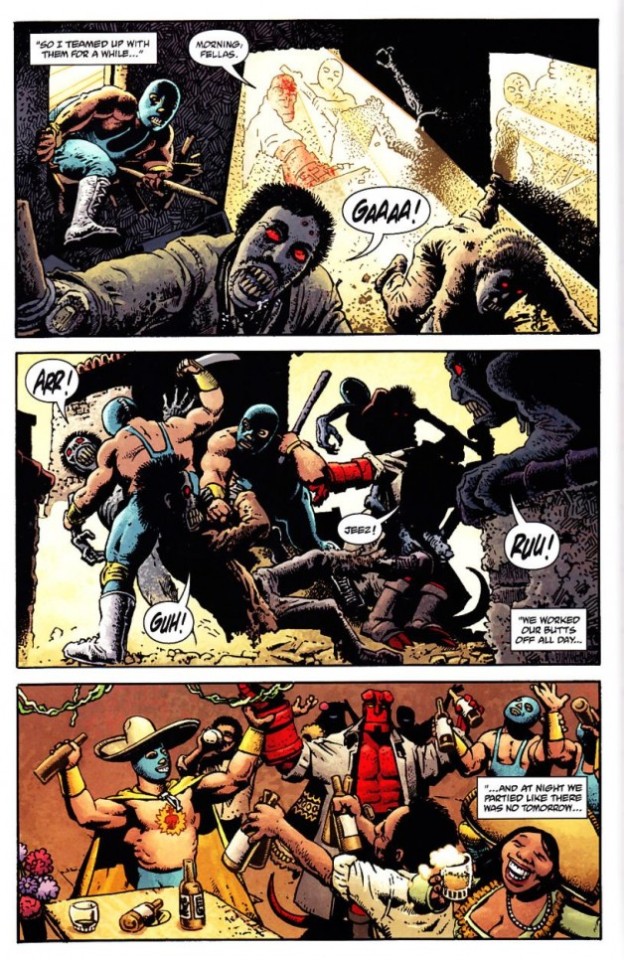
Charlie Allard
Charlie Adlard is a British comic book artist, who have worked on the comic industry for over 25 years. He spent the majority of his time since 2003 working in The Walking Dead along side with writer Robert Kirkman , until the last issue on 2019
He started reading comics when he was very young, and he said that he was very lucky to have influences of American comics and the more high art, such as Asterix and Tin Tin. He was fascinated by European comic books artists like Moebius, Alberto Uderzo and Herge.
He started his career as many British artists and writers, working on 2000 AD, with characters such as Judge Dredd, Armitage and eventually Savage. In the United States he started working with the X Files, Astronauts in trouble, and of course The Walking Dead.
Adlard started in The Walking Dead from issue 7, and brought a slightly different style, from the previous artist.
Adlard's art is very cartoonish, but the universe of The Walking Dead still doesn't get silly because of it. Quite the opposite, the dirt and rot that Adlerd puts on his characters and the world, only sustains what a horrible world it is to live in.
Many readers complain about Adlard's style, being very simple, that his characters are very similar, and sometimes it is difficult to identify them. But I believe that although his style does not vary much, when it comes time to show a horde of zombies, a devastated city, people feeling despair, and extremely disturbing scenes, Adlard manages to excel.
Adlard's main tool is ink. All The Walking Dead magazines are in black and white, and he manages to give a lot of depth to the scenarios and characters using only a few ink stains.
Today Adlard is doing some comics, mainly for DC, but says that he does not intend to work with Kirkman and zombies again, because he wants to explore other themes, and to innovate his drawing skills.
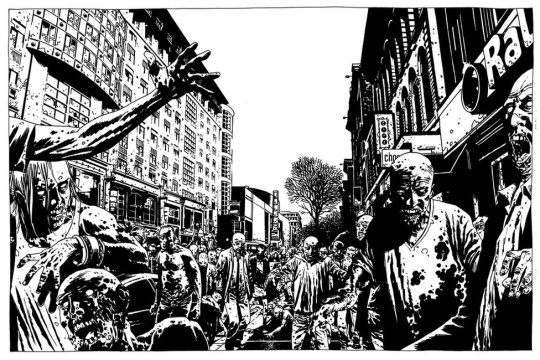
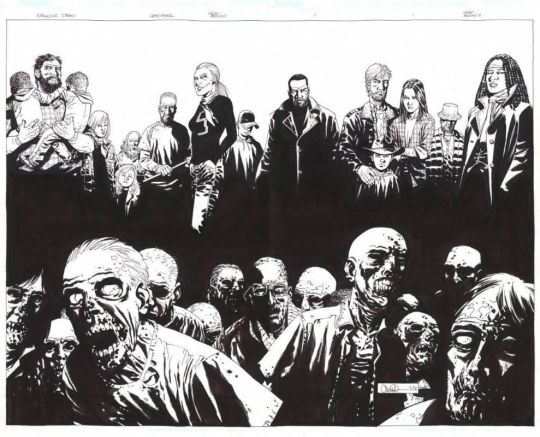


Zaha Hadid
Zaha Hadid was one of the most important and well known figures in contemporary architecture and design.
With a singular trajectory, marked by a versatile, bold and out of the box style, she was the first woman to receive Pritzker Prize for architecture and was also the only female representative honored by the Royal Institute of British Architects with a golden medal.
Zaha Hadid was born in Iraq, more precisely in the city of Halloween, in Bagdá, in the year 1950. Her family was of high class, her father being an important politician and her mother an artist.
Still young, she traveled and studied in other places of the world, like London and Switzerland, but it was in her native land the she got her first formation, when she graduated in mathematics.
At the age of 22, in 1972, she enrolled in one of the most famous independent schools of architecture in London, and there she gave the starting point to her career by studying and creating an important connection with the Dutch architect Rem Koolhaas, a figure that encouraged her and opened the doors for opportunities.
Later in the 1980s, Zaha Hadid decided to open her own office. This, Zaha Hadid Architects was born, which made her name and talent recognized worldwide.
Known for her works with futuristic lines, clean and pure forms, as well as the fragmentation of architectural design.
Her projects and discussions raise issues that put architecture and its future to the test. This is because the architect seeks in her works to interrelate design, architecture and urbanism.
I knew Hadid and some of her works, but it was the recommendation of my teacher Lauren, that I should look for this architect.
As my project takes place in the future, she recommended that I look at some works by Zaha Hadid to get inspiration when creating the scenario for the comic. I find it very interesting how her works have this futuristic aesthetic , because it reminds me of science fiction films like Blade Runner with those skyscrapers and buildings with different shapes and sizes that are extremely imaginative that could only exist in films.
With unique works and projects, famous for their exuberance, futuristic elements, curves, non linear shapes, distortions and fragmentations, Hadid inspired and generated fascination both for her constructions around the world.




Syd Mead
Syd Mead was a designer, best known for working on films such as Aliens, Blade Runner, Tron and Star trek.
Mead was born in Minnesota, United States, on July of 1933, but five years later he moved to a second house in the western of United States prior to graduating from High School in Colorado in 1951.
Some years later, he did the Art Center School in Los Angeles, where he graduated with great distinction in 1959. He was immediately recruited by the Ford Motor Company.
At Ford he worked in the advanced styling department, creating futuristic concept car designs. But his imagination went beyond cars and he began to imagine clothes, helmets, buildings and scenery from hyper advanced civilization.
After Ford, he also worked in other big companies like Chrysler, Sony and Phillips. After that he started migrating to the concept art world of movies.
Mead is really important for generation of writers of science fiction, because many of them were influenced by Mead’s colorful paintings.
Mead never wrote a novel or short story. He imagined the future in his mind and turned that imagination into illustrations.
In 1979 he designed the extraterrestrial spaceship for the first film “Star Trek” in the cinema. Ridley Scott called Mead to design the buildings and flying cars of the futuristic Los Angeles “Blade Runner” in 1982. In 1986 he was hired to design the space station and vehicles of the movie Aliens directed by James Cameron.
Almost at the same time, the designer created the electronic world of
“Tron” for Disney studios. The same ones who hired him in 2014 to design the futuristic city of “Tomorrowland”.
Mead died in 2019 after three years of lymphoma, he was 86 years old. He was a great influence for many designers and science fiction writers and illustrators, due for his creative worlds and automobiles , Elon Musk quotes Mead as one of his major influences, on visions of the automotive future and design in general.

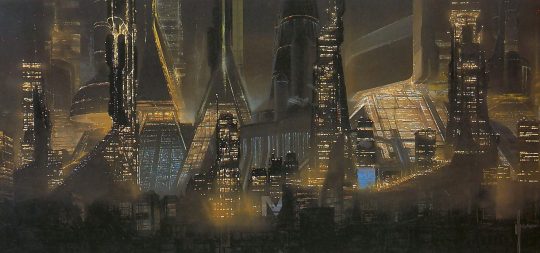

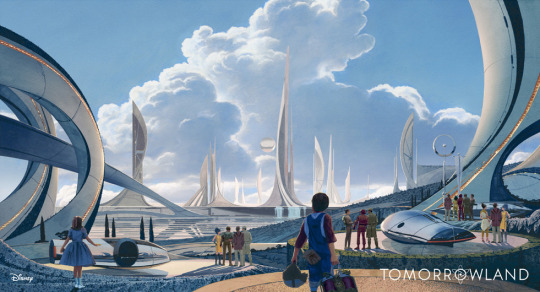
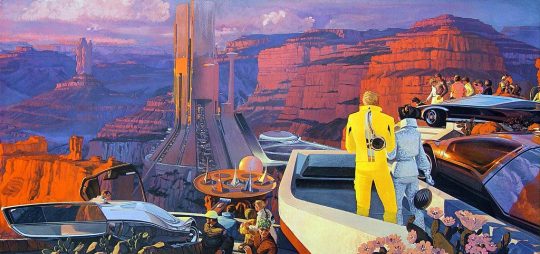
Transmetropolitan by Warren Ellis and Darick Robertson
Transmetropolitan is a comic written by the British writer Warren Ellis and the American illustrator Darick Robertson, published by the Vertigo label, and falls within the cyberpunk genre, and the problems that rampant technology will cause us.
Throughout the 60 issues of Transmetropolitan, Ellis and Robertson build a chaotic and brilliantly alive future, presenting a sci-fi society with a peculiar mix of elements of cyberpunk, political dystopias, bioengineering and transhumanism, sexuality, economics and much more.
In a dystopia, in a not so distant future, the journalist Spider Jerusalem is isolated for fiver years in a hut in the forest, but he has to return to the city to earn some money.
Throughout the comic, amid a nihilistic aura that humanity has no salvation, the author- Warren Ellis - criticizes the consumerism and futility. The illustrations, of Darick Robertson, is full of excesses as the environment should be, a brand of the style of the 1990s.
The search for the truth is the central theme of this work, and in the midst of all this we found ourselves in a investigative odyssey that involves the lowest scum of that society ( thieves, murderers and rapists) until reaches the highest of the scum ( the presidency).
This background allows the work to touch on the most profound social themes, and without fear of saying what needs to be criticized, this is where Transmetropolitan shines, and provoke deep reflections on issues such as racism, the influence of media, the power of religions, the education, and many other themes.
In short, Transmetropolitan dissects and criticizes everything, it points out the flaws, the lies and the hypocrisy of each one. It’s a study about the problems of democratic society in the 21th century.

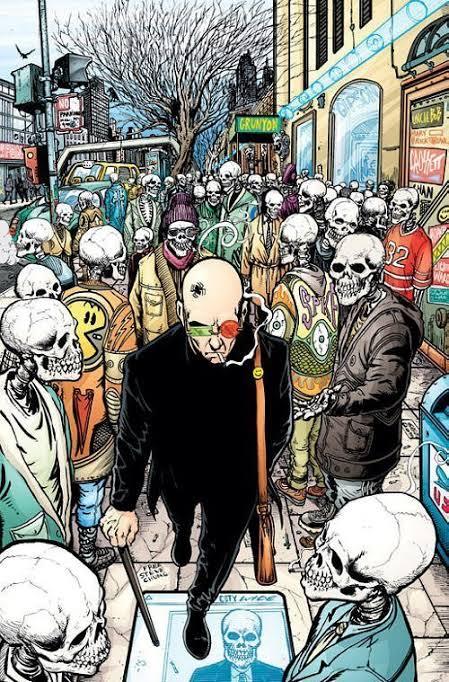
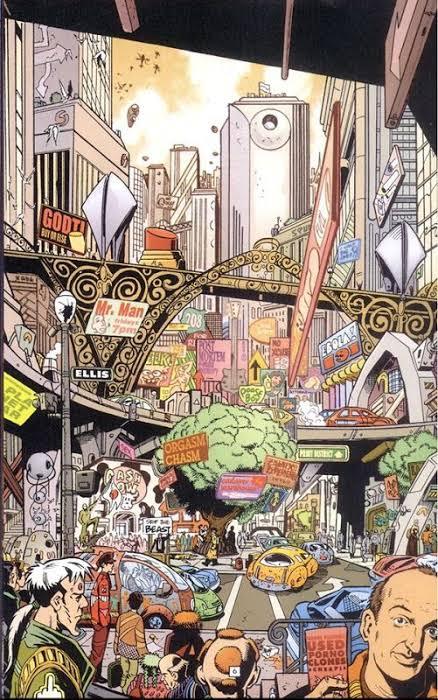
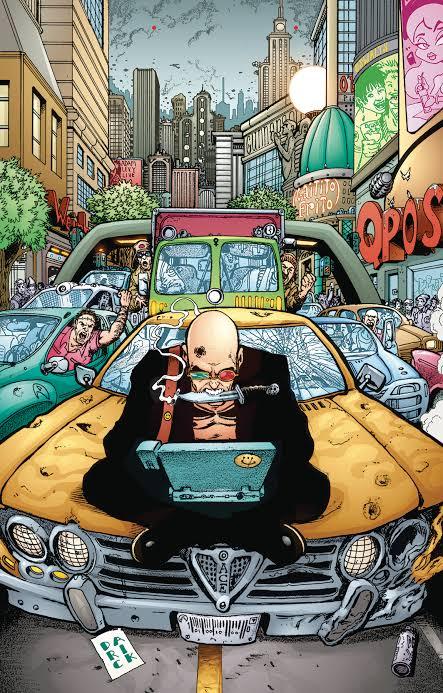

Jon Mcnaught
Jon Mcnaught was born in 1985, London, England. He work with drawing comics, and work as an illustrator, printmaker and lecturer.
After spending several years on the Falkland Islands during his childhood, which will inspire his second book, Pebble island.
The book pass years after the war, where he tries to recreate his childhood, with aspects of his curiosity, when he was exploring abandon bunkers, where it was just part of landscape, or somewhere where he could play.
His work has essentially been landscape print-making (often situated in the city), but with quite simple intention of capturing the sense of space, light, time etc.
His work is mostly about that, places that he was interested in depicting, and trying to reproduce the visual.
He want the characters to feel like elements of a landscape or an environment ( he preferes to focus more on the background, than the characters itself). But usually he uses figures and postures to suggest expressions rather than close ups showing facial features.
What I like about Mcnaught's work is that they are simple designs, but the colors are very vivid. The way he constructs the scenarios is very invective, because it doesn’t need to be extremely detailed, he just needs a few lines to show what he is talking about.

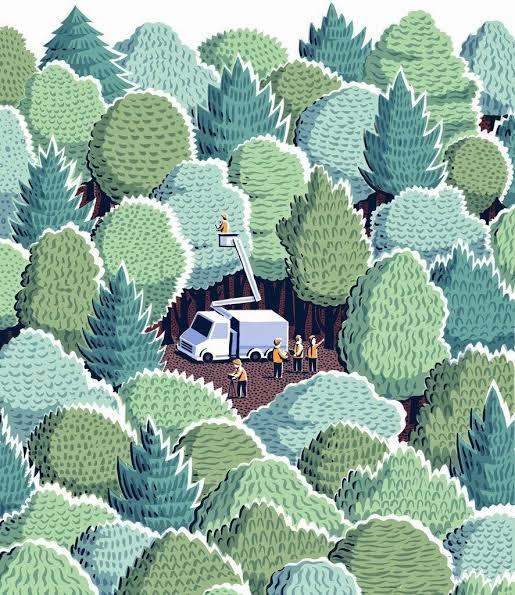


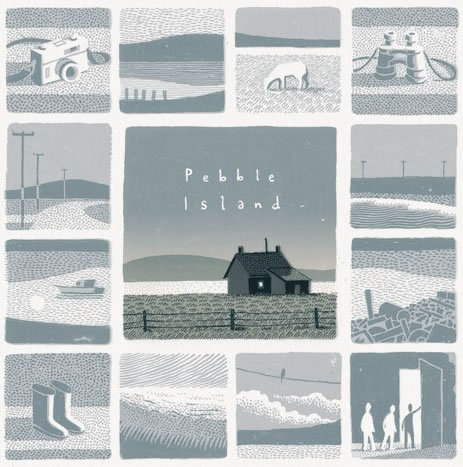
13 notes
·
View notes
Text
Favorite Movies as of 2021
Subject to updating because surely I’ve missed a few. This is not supposed to be a list of meritorious films but rather just a list of movies I genuinely enjoy. It runs from Shakespeare to Bill & Ted with heavy doses of 80s fantasy, superhero schlock, and pretty much anything with Kurt Russell in it. Enjoy.
1- Harvey
No contest, my favorite of all time.
2- Big Trouble in Little China
It’s always a great joy to introduce a new viewer to this film.
3- Flash Gordon (1980)
In which they totally lean into the camp and low budget.
4- The Thing
I watch this annually upon the first major snowfall.
5- Titus (Taymor)
One winter break Titus would be on one of the movie channels each day when I woke up, so I watched it daily for a month and it didn’t get old.
6- Death to Smoochy
“Are you alright?”
“I’m a little fucked up in general so it’s hard to gauge.”
7- Blade Runner (The Final Cut)
So there’s this dude Deckard and he hunts robots but it turns out HE’S a robot, oh so very clever, little film
8- Tombstone
I recently learned that Kurt Russell directed this film in all but name.
9- The Dark Crystal
Immersive fantasy, though I’m sure it appears plain, drab, and simple now after the Netflix prequel.
10- Somewhere in Time
I’m a romantic, I guess. Thus all the John Carpenter movies.
11- Grosse Pointe Blank
So good, I used to think I liked John Cusack.
12- The Producers (musical)
You heard me. Wilder and Mostel were great but the musical version had decades to mill over and expand the premise.
13- To Be or Not To Be (Brooks)
Surprisingly suspenseful.
14- The 13th Warrior
Saw it again recently and it holds up. Horror, only it happens to viking warriors who would rather chop the horror down than run.
15- The Mighty Thor
I mean, Black Panther is objectively the best of the lot but subjectively this is my personal favorite superhero flick. I must have seen it a half a dozen times at least.
16- Lost Boys
A billion Chinese can’t be wrong.
17- Die Hard
A Christmas tradition. As a postman, it’s cathartic for me to watch Christmas get blown up a little before all the hugging and sentiment.
18- The Blues Brothers
Deadpan hilarity cut with performances by legends of blues and soul.
19- The Sting
The best heist film. It keeps you guessing until the very end and no twist feels arbitrary or leaves a hole.
20- Interview with the Vampire
Fun fact, I looked like Pitt’s Louis when I was a young man in the goth scene.
21- Bill and Ted’s Excellent Adventure
“Be excellent to each other!”
“Party on, dudes!”
*air guitar*
22- The Seventh Seal
See? This list has its high points.
23- Revolutionary Girl Utena
Note: Read the entire manga, watch the entire anime series, and read Adolescence of Utena BEFORE watching this or you’ll be left confused. Dazzled but confused.
24- The Nightmare Before Christmas
So good I got the tarot deck.
25- The Last Unicorn
It’s still a damn shame they never made that live action remake. Christopher Lee was set to reprise King Haggard.
26- Chasing Amy
Honestly changed my life.
27- Excalibur
It’s weird though how they’re always in armor. Wedding? Armor. Dinner? Armor. Deathbed? Armor.
28- Ginger Snaps
A cut above any other werewolf movie I’ve seen.
29- Top Secret!
My sense of humor distilled.
30- Clash of the Titans (Harryhousen)
Yeah it’s dry but then there’s the monsters.
31- Monty Python’s the Meaning of Life
People are not wearing enough hats.
32- Shadow of the Vampire
Nosferatu nearly made this list but it’s hard to pinpoint a definitive cut. Try instead this film about the making of Nosferatu with an actual vampire as the vampire.
33- Vampire Hunter D: Bloodlust
Look, we as a culture had the unfortunate experience of Twilight. This is the same premise but actually good.
34- The Last Supper
This film challenged and changed me as a young man more so than any other work of art.
35- The Princess Bride
The perfect film, but I’ve seen it so much it’s down at 35 now.
36- Blazing Saddles
What can I as a white guy say? Just watch the movie.
37- Streets of Fire
Always suspicious to me how Final Fight premiered within a year of this movie.
38- Gremlins
More Christmas havok. Yum?
39- The Beastmaster
Forgotten and underappreciated.
40- Ladyhawke
A thing of beauty.
41- Willow
C’mon. It’s Willow. I have nothing to justify here.
42- Speed Racer
I know you heard it’s bad but hear me out: it is the strongest narrative I’ve ever seen on film and it’s exactly the way you played with your toy cars when you were little.
43- Angelheart
You’re supposed to know that de Niro is Lucifer. The rest is mystery and the final reveal set up a trope that’s been done into the ground nowadays.
44- The Hunger
More atmosphere than plot, but hey, vampire Bowie!
45- Zoolander
My partner’s favorite.
46- Faust (Murnau)
You will be shocked to see what was possible to achieve in film in 1926.
47- A Muppet Christmas Carol but a cut that includes the fiance’s song
This finishes out my traditional Christmas films.
48- Mary Shelley’s Frankenstein
Y’know, I’ve got two Branagh films on here and neither are what you would expect given his catalog. The other one’s Thor for crying out loud.
49- Highlander
I noticed in recent editions of Vampire: the Masquerade that it’s still possible in that game to hide a katana in a trenchcoat. This movie is why.
50- The Name of the Rose
One of only a few instances where I prefer the film to the book. That book loooooong.
51- Robocop (1987)
Of all the damn science fiction, why must we be in Robocop?
52- The Prophecy
Now we’re getting into films I demoted since the last time I updated this list. This film’s a slow burn unless you get turned up for angels and Christopher Walken like I do.
53- The Warriors
Would be higher if the opening wasn’t so slow.
54- Legend
Tim Curry kills it as Darkness.
55- Black Panther
Objectively the best superhero movie and the Academy backs me on that one.
56- Wonder Woman
I do wish they’d trot out Vandal Savage as a Wonder Woman villain.
57- Captain America: The Winter Soldier
Just rewatched this one earlier! It is heavily marked by the height of the War on Terror.
58- Blade
The ancestor of all modern superhero movies and a solid vampire flick to boot.
59- Teenage Mutant Ninja Turtles
Nostalgic for me? Maybe, but I hold that this is the first comic film worth a damn because they stuck with the comics when they wrote it.
60- Captain America: the First Avenger
This movie is a real test of character. If someone doesn’t like Cap it’s because they think goodness is unrealistic.
61- Four Rooms
Really just rooms 3 and 4.
62- Reservoir Dogs
Hey, two Tim Roth films in a row!
63- Event Horizon
Do you see?
64- What Dreams May Come
Kind of an emotional ringer, especially after William’s death.
65- Monty Python and the Holy Grail
Have I watched it into the ground? Yes. Is it still hilarious? Yes, and it gets funnier the more you study Arthurian myth.
66- Pulp Fiction
I’m kinda over this now.
67- The Crow
People who liked the comic passionately disagree with me but I still like this one.
68- Akira
Still.
69- Ghost in the Shell
Still, though the farther you get from 13 the less titties you need in your art.
70- Beetlejuice
Why not? Let's just tack this on there.
Honorable Mentions:
Fight Club
A suburb film but one I grew out of, as should everyone. If you meet a man who’s passionate about Fight Club, run!
American Psycho
Ditto. I grew out of this but it’s still excellent.
What’s Eating Gilbert Grape
A horrible caricature of my brother’s life. I don’t get along with my brother any more.
Rocky Horror Picture Show
Not actually a good film if you watch it straight with no commentary. Still, it’s a cornerstone of queer culture.
Guardians of the Galaxy vol. 2
Of all the superhero films, this is the one that resonated with me the most. I was in a weird place at the time. It still resonates with me now because I’m a foster dad.
2 notes
·
View notes
Text
How TCM Resurrects Plan 9 from Outer Space for Ghoulish Table Read
https://ift.tt/3rnt3hu
UFOs are often visible, but not always. Sometimes they make noise, sometimes they are silent. If you’ve never seen a flying saucer, that is proof they are everywhere. This is one of the many amazing things we learn in TCM’s upcoming table read of Ed Wood’s masterwork, Plan 9 from Outer Space.
We once laughed at the horseless carriage, the aero-plane, the telephone, the electric light, vitamins, radio, and even television. But it took a while to get the joke about Plan 9 from Outer Space. Written and directed by Edward D. Wood Jr. in 1959, it was a little-known independent film with a direct line through directors who carried on the DIY-filmmaking spirit like John Cassavetes, Melvin Van Peebles and John Waters. The Cult of Plan 9 began when Ed Wood was posthumously awarded a Golden Turkey Award for Worst Director of All Time in 1980. Though this has been disputed.
Turner Classic Movies is the go-to channel for prestigious films. You can always count on a showing of The Treasure of Sierra Madre or The Public Enemy, or Citizen Kane. But top prize in the Golden Turkey awards carries its own prestige.
“This isn’t ‘Plans One Through Eight from Outer Space,’” Jerry Seinfeld proclaimed at the Chinese restaurant in a 1991 episode of Seinfeld. “This is Plan 9. The one that worked. The worst movie ever made.”
The SF Sketchfest presentation was adapted for the stage and virtual stage by former The Simpsons writer, and self-proclaimed Ed Wood superfan, Dana Gould. He and his Stan Against Evil co-star Janet Varney have been acting in live staged reads with a revolving cast of eager comic actors for over three years. The Zoom production also features Kat Aagesen, Bob Odenkirk, Bobcat Goldthwait, Oscar Nuñez, Deborah Baker Jr., Maria Bamford, David Koechner, Jonah Ray, Paul F. Tompkins, Baron Vaughn, and Gary Anthony Williams. The miniature visual effects, which are by no means just cardboard cutouts, were done by Mike Carano, and the sounds of musical accompaniment came out of Eban Schletter.
Laraine Newman is the narrator. She brings Gould’s adapted stage directions to such vivid life they can reanimate the dead, which is a key element of the actual plan at the center of the cult movie. Originally titled “Grave Robbers from Outer Space,” the film marked the last appearance of Bela Lugosi, who had also acted in Wood’s 1953 feature Glen or Glenda.
Lugosi’s footage for Wood’s unmade film “The Vampire’s Tomb,” was repurposed for Plan 9. Lugosi died of a heart attack on Aug. 16, 1956. To complete the film, Wood cast his chiropractor, Tom Mason, who in spite of his professional familiarity with the human skeletal structure, somehow believed he could mask the fact that he was much taller than the horror icon by pulling his cape over his face.
The table read of Ed Wood’s Plan 9 from Outer Space is part of TCM’s Classic Film Festival weekend, which runs through May 9. For easy comparisons, the original film will air directly after the event. Dana Gold and Janet Varney spoke with Den of Geek about refurbishing the low-budget cult classic, and how, like their predecessor, they proudly spared every expense on its new décor.
Den of Geek: I watched the table read a second time while playing Plan 9 in another window, and I just have to say, recreating those sets must’ve cost a fortune.
Janet Varney: Yeah, just like it cost Ed Wood a fortune.
Dana Gould: That’s the genius of, of Mike Carano. All those things were this big. You can see, I have the Bela Lugosi statue and the saucer. What he did was so amazing, and it really brought [the production] up to be better than it had a right to be. When Janet and I discussed doing this on Zoom, we were like, “Well, how do we take the limits of Zoom and turn them to our advantage? Why is it on Zoom?” By doing it, one, it allowed us to get a cast that we might not be able to get. Got people in different places. Maria Bamford was in Minnesota. Bob Odenkirk was in Vancouver. So, we could get people that normally we couldn’t get. Doing it in black and white helped. And then what Mike Marano did, it made it something unique.
Janet Varney: I would just also add, as a tribute to Ed Wood, we’ve never had anyone that we’ve asked to do the show who hasn’t wanted to do the show. Whether or not they’ve been in town for the live version, every person that we love that we’ve asked to be a part of the cast at one time or another is like, “Oh, my God, I need to do that. I want to do it. When is it? Please say it’s not a date I’m out of town. Please say it’s not. Will you ask me on the next one?”
Everyone knows this movie. And the idea of getting to step into its shoes in any kind of iteration is really exciting for every single person that we’ve ever asked.
Dana Gould: And it’s great to see how different people play different parts. Joel Murray plays the General different than David Koechner plays the General. Bob Odenkirk plays Eros differently than Patton Oswalt plays Eros. It’s always great. And Janet and I, we don’t want to know what you’re going to do. Just do it.
For this production, you assembled the all-star team. But were you ever tempted to use the same kind of players Wood used: wrestlers, tap dancing accordion players, chiropractors, and radio psychics?
Janet Varney: That’s a great question. I feel like we also have pretty good access to all those folks. So maybe that will get the next variety version. Because our friend, Jim Turner, is just about to do a fundraiser for the kind of variety acts who have been struggling in this last year, because of the many myriad things that they do.
So, I actually love that idea, Tony. And you’re right, it would be a totally different experience. That’s an interesting idea too, because we do come at it with a bunch of people who love the movie, but there’s also some major winking going on, as all the comedians and actors try to lean into being: “It’s my first time on stage, maybe my first time saying words,” really playing that up.
In the future, do you hope to see this performance eviscerated on Mystery Science Fiction Theater 3000?
Dana Gould: That would be great. If they did this.
Janet Varney: Especially because Bill and Kevin have done it. They have been in our production of Plan 9. Bill had been what Laraine [Newman] did. Bill did the narration at a show, at SketchFest, and it was great.
Dana Gould: I would like to see Jonah making fun of himself.
Janet Varney: Yeah. Let’s get meta. Our fans can handle it. Fans of MST3K can handle it. Plant 9 fans can handle it. Everybody could handle it.
I know I’m paraphrasing Seinfeld, but as the person who’s trusted with Plan 9 and all that comes with that, did you get to see the first eight plans from outer space?
Janet Varney: And are you allowed to talk about it if you did?
Dana Gould: Exactly. What were they?
Janet Varney: So many questions.
Dana Gould: So many questions.
Were the first eight plans rejected?
Janet Varney: Or were they all executed? And I use that word purposefully. Were all of those plans executed and they didn’t have great results?
Dana Gould: That’s a drunk man at a typewriter, “Plan 9 sounds good.” I remember showing Plan 9 to somebody who’d never seen it before. And they turned to me afterwards and said, “Did he not have any friends he could have shown this to and gotten notes?” He didn’t have those kinds of friends.
Read more
Movies
From Hitchcock to Star Wars: What Makes a Great MacGuffin
By David Crow
Movies
Why Turner Classic Movies is Reframing Problematic Hollywood Favorites
By David Crow
What are some of your favorite mistakes from the movie?
Janet Varney: Oh, God. I was going to say Dana had mentioned that the first time he saw the movie was on a video cassette that Tom Kenny and Dan Spencer, and Bobcat Goldthwait showed him. And I was actually going to ask, did you think it was the tape glitching at the end when the monologue goes from, blip to [makes a noise]? And you’re like, “Wait a minute. Back that up, hold on. Is somebody going to fix this?”
That’s definitely one. That’s a spectacularly new, weird problem in a movie that was not a consistent problem. So, you’re like, “Wait, how did that happen one time, in this very, very overt way?” So good.
Dana Gould: From the very beginning, it’s like the first time you saw William Shatner do “Rocket Man.” I remember, I had a party at my house, and I was working on The Ben Stiller Show, and everybody was there. And back then, there was no YouTube. You would just have these cassette tapes with all of the weird stuff that you had collected on it, like the farting priest and all these weird things that you had, and “Rocket Man.” And I remember showing “Rocket Man” at this thing and Bob Odenkirk just shouting at my television, “You’re a grown man. You’re a grown man.”
I always thought Shatner gave the same line reading for “Mr. Tambourine Man” as he did for “Kahn.”
Dana Gould: Yes, he did. He did. He had a couple of tricks, and he used them. Yeah. There’s one direction he doesn’t get a lot, “You want to just try one big? You want to just see how it goes?” “Take the chains off and let it rip?”
Was some of the background music in this reading, especially the oxidation bit, inspired by The Simpsons?
Dana Gould: That’s all Eban [Schletter, the musical accompanist], you have to ask Eban. But again, that’s great, especially the Solaronite song. Necessity being the mother of invention, that is a brutal chunk of dialogue for anybody, a thankless, brutal chunk. And every time I give it to Paul, I say, “I’m apologizing ahead of time. I give it to you because I don’t want anybody else to do it. Because if it was anybody else, it would be death.”
Eban came up with that. And we were just like, “Maybe we can break this up. Maybe there’s a way to break this up.” And then Eban came up with that kind of thing. And it is one of those things that I love, that it’s like a mutant. It’s grown into its own weird thing to solve its inherent problems. You can’t describe it to anybody. It’s just like, you have to see it.
I used to remember describing Kevin Meaney, the comedian. I used to just tell people, “I can’t describe what he does. You just have to see him, but then you’ll know. You only need a minute, and you’ll get it. But I can’t describe it to you.” That’s really a good analogy.
Laraine Newman, I believe, steals this as the narrator. How much of that is improvised and how much of that is written by you? Because I know that you wrote the stage directions.
Dana Gould: It’s written, but Laraine, I call it “newscaster flat.” Laraine knows how the notes need to be played. It’s like the Wrecking Crew, you have a guitar behind you. I don’t know what Tommy Tedesco is going to play, but I know it’s going to be good. I don’t know what Carol Kaye is going to play, but I trust it. It’s the same thing. It’s a murderers’ row, and I wouldn’t have the gall to tell them what to do.
Janet Varney: It takes a very specific kind of confidence as a performer to be that deadpan. It’s such a specific skill. And it’s a skill, I think, born out of a type of bravado and expertise that’s all just tightly contained in this tiny space, where she’s not trying to sell any of it. And that is the genius behind what she does is just letting it lay out there like that. I mean, it’s hard.
When you have something that you know is funny and you would be laughing yourself, if you were listening to someone else read it, it’s so hard not to want to sell it. Like, can I make this even funnier? And she’s like, “No, I need to take it all the way back, to the back of the house just like, who me, who me? I’m just reading these things.” And it’s just so brilliant.
Dana Gould: This is a person that did sketches on live television with John Belushi and Bill Murray. So she definitely knows where her center of gravity is.
Janet Varney: That’s right. Well said.
Dana Gould: And yeah, again, unflinching. And that takes, as a performer, just like a little inside baseball, a lot of control and to really, to have control of your own ego, to know that I’m going to get what I want by stepping way back. I mean, Sterling Hayden is the only person I’ve ever seen blow Peter Sellers off the screen. And he does it just by, he’s like a statue, but there’s so much weight to it.
In the original movie, I love the “Criswell Predicts.” So I wanted to ask, Janet, do you get asked to do bathroom readings?
Janet Varney: I would if asked, I would love to. That’s one of the things that’s great about Ed Wood in general too, is just having this a sort of fascination with the occult and that kind of thing. And the way that it fits into camp is so appealing. And so, yeah, I would very happily jump back into some bad psychic practices if I could. Hopefully, I will someday.
Dana Gould: And an unerring dedication to Wicker furnishings.
Janet Varney: That’s right. Always that. Paula and her wicker.
Because the table read is done during COVID and everyone feels an immediacy to Zoom calls, were you ever at all concerned about an Orson Welles’ scenario, where the residents of San Fernando Valley will believe they’re under attack by flying saucers from outer space?
Janet Varney: If only.
Dana Gould: Yeah. That’s the least of our problems out here. I don’t know when you visited last time, but the walking dead, they’re around.
The table read of Ed Wood’s Plan 9 from Outer Space airs on Friday, May 7 at 8pm on TCM. Plan 9 from Outer Space airs at 9:30pm.
cnx.cmd.push(function() { cnx({ playerId: "106e33c0-3911-473c-b599-b1426db57530", }).render("0270c398a82f44f49c23c16122516796"); });
The post How TCM Resurrects Plan 9 from Outer Space for Ghoulish Table Read appeared first on Den of Geek.
from Den of Geek https://ift.tt/2Rxjm4a
3 notes
·
View notes
Photo

Weird Westerns: Race, Gender, Genre (Postwestern Horizons), edited by Kerry Fine, Michael K. Johnson, Rebecca M. Lush, and Sara L. Spurgeon, University of Nebraska Press, 2020. Cover art by James Rinere, info: nebraskapress.unl.edu.
Weird Westerns is an exploration of the hybrid western genre—an increasingly popular and visible form that mixes western themes, iconography, settings, and conventions with elements drawn from other genres, such as science fiction, horror, and fantasy. Despite frequent declarations of the western’s death, the genre is now defined in part by its zombie-like ability to survive in American popular culture in weird, reanimated, and reassembled forms. The essays in Weird Westerns analyze a wide range of texts, including those by Native American authors Stephen Graham Jones (Blackfeet) and William Sanders (Cherokee); the cult television series Firefly and The Walking Dead; the mainstream feature films Suicide Squad and Django Unchained; the avant-garde and bizarre fiction of Joe R. Lansdale; the tabletop roleplaying game Deadlands: The Weird West; and the comic book series Wynonna Earp. The essays explore how these weird westerns challenge conventional representations by destabilizing or subverting the centrality of the heterosexual, white, male hero but also often surprisingly reinforce existing paradigms in their inability to imagine an existence outside of colonial frameworks.
Contents:
Introduction: Westworld(s): Race, Gender, Genre in the Weird Western – Michael K. Johnson, Rebecca M. Lush, and Sara L. Spurgeon
Part 1. The Weird West, Past and Present
1. Attack of the Monstrous Vegetable: Bret Harte’s Pioneer Nightmare and “Miscegenation” Dream – Tara Penry
2. Strange Country: Sexuality and the Feminine in Robert Coover’s Ghost Town – Eric Meljac and Alex Hunt
3. A Selective History: Identity and Identification in Deadlands – Nicholas William Moll
Part 2. Native Reclamations and Representations
4. Mongrel Transmotion: The Werewolf and the Were/Wear/Where-West in Stephen Graham Jones’s Mongrels – Joshua T. Anderson
5. Indianizing the Western: Semiotic Tricksterism in William Sanders’s Journey to Fusang – Sara L. Spurgeon
6. Magnificence and Metas in Professional Westerns – Domino Renee Perez
Part 3. Surrogate indians and Other Indigenous Metaphors
7. Defamiliarizing the Western on the Extraterrestrial Frontier: Jonathan Lethem’s Girl in Landscape – Johannes Fehrle
8. Shining the Light of Civilization: The Savage Other of the Frontier in Firefly and Serenity – Meredith Harvey
9. Racial Metaphors and Vanishing indians in Wynonna Earp, Buffy the Vampire Slayer, and Emma Bull’s Territory – Rebecca M. Lush
Part 4. The African American Presence in the Weird Western
10. The Mad Black Woman in Stephen King’s The Dark Tower – Jacob Burg
11. Uncle Tom’s Cabin Showdown: Stowe, Tarantino, and the Minstrelsy of the Weird West – Joshua D. Smith
12. Race and Gender in the Time Travel Western – Michael K. Johnson
Part 5. The Undead in the Weird Western
13. Go West, Old Man: Or, Buffalo Bill and the “Yellow Peril” in Zeppelins West – Cynthia J. Miller and A. Bowdoin Van Riper
14. amc’s The Walking Dead and the Restructuring of Gender and Race on the Neofrontier – Scott Pearce
Afterword: This Is (Not) the End – Stephen Graham Jones
Contributors
Index
#book#essay#weird essay#horror essay#postwestern#weird western#horror western#western fantasy#western
20 notes
·
View notes
Note
Thanks for recommending Gideon the Ninth! It was so good! Do you have a book rec tag I could check out? :)
honestly i should, huh? i’ve read more books than probably ever before this year and i’ve talked about ‘em intermittently, but not with a consistent tag. i’ll recommend some right now, though, with a healthy dose of recency bias!
sf/f
the priory of the orange tree by samantha shannon - a truly epic fantasy novel with one of the most beautiful, satisfying f/f romances i’ve ever read. the novel takes account nearly everything i hate about fantasy as a genre (overwhelmingly straight, white, and male centric, bland medieval European settings, tired tropes) and subverts them. incredible world-building, diverse fantasy cultures, really cool arthrurian legend influence. one of my favorite books i’ve ever read tbh.
gideon the ninth by tamsyn muir - which you’ve read, obviously, but for posterity’s sake i’m keeping it here! sci-fi + murder mystery + gothic horror. genuinely funny while still having a super strong emotional core and more than enough gnarly necromantic to satisfy the horror nerd in me. makes use of some of my favorite tropes in fiction, namely the slowburn childhood enemies to reluctant allies to friends to ??? progression between gideon and harrow. absolutely frothing at the mouth for a sequel.
the broken earth trilogy by nk jemisin - really the first book that helped me realize i don’t hate fantasy, i just hate the mainstream ‘medieval europe but with magic’ version of fantasy that dominates the genre. EXTREMELY cool worldbuilding. i’ve definitely described it as like, a GOOD version of what the mage-vs-templar conflict in dragon age could have been, with a storyline particularly reminiscent of “what if someone got Anders right?”
this is how you lose the time war by amal el-mohtar and max gladstone - i’m not usually big on epistolary novels, but this one really worked for me. spy vs spy but it’s gay and takes place between time traveling agents of two opposing sides of a war. the letter writing format really plays to el-mohtar’s strengths as a poet, the unfolding love story is weird and beautiful. it’s a really quick read, too, if you’re short on time or attention.
empress of forever by max gladstone - i just finished this one this week! if you’re in the mood for a space opera, look no further. imagine if steve jobs was an asian lesbian and also like not a shitty person. this is where you start with vivian liao. you get the classic putting-the-band-together arc with beings from all across the universe, your romances and enemies-turned-friends and uneasy alliances all over the place. really satisfying character development and some extremely cool twists along the way. it’s just a fun good time.
the luminous dead by caitlin starling - this one rides the line of horror so it’s closest to that part of the list. it reminds me of the most inventive low budget horror/sci-fi films i’ve loved in the best way possible because it makes use of the barest narrative resources. it’s a book that takes place in one primary setting, featuring interactions between two characters that only meet each other face-to-face for the briefest period. the tension between the two characters is the most compelling part of the story, with competing and increasingly unreliable narratives and an eerie backdrop to ratchet things up even higher. the author described it as “queer trust kink” at one point which is, uh, super apt actually and totally my jam. the relationship at the center of the book is complicated to say the least, outright combative at points, but super compelling. plus there’s lost of gnarly sci-fi spelunking if you like stories about people wandering around in caves.
horror
the ballad of black tom by victor lavalle - we all agree that while lovecraft introduced/popularized some cool elements into horror and kind of defined what cosmic horror would come to mean, he was a racist sack of shit. which is why my favorite type of ‘lovecraftian horror’ is the type that openly challenges his abhorrent views. the ballad of black tom is a retelling of the horror at redhook that flips the narrative by centering the action around a black protagonist.
lovecraft country by matt ruff - more of what i just described. again, lovecraftian themes centered around black protagonists. this one’s especially cool because it’s a series of interconnected short stories following related characters. it’s getting a tv adaptation i believe, but the book is definitely not to be missed
rolling in the deep / into the drowning deep by mira grant - mermaids are real and they’re the ultimate deep sea predators! that’s really the whole premise. if for some reason that’s not enough for you, let me add this: diverse cast, a romance between a bi woman who’s not afraid to use the word and an autistic lesbian, really cool speculative science tangents about mermaid biology and myth.
the haunting of hill house by shirley jackson - it’s halloween month so i’m thinking about hill house again. one of the greatest american ghost stories ever written. especially worth the read if you follow it up w the 1964 film adaptation (the haunting) and then the 2018 netflix series.
the hunger by alma katsu - i’ve always been fascinated by the donner party even though we now know the popular narrative is largely falsehoods. still, this highly fictionalized version of events scratched an itch for me and ended up surprising me with its resistance from the most expected and toxic racist tropes associated with donner party myth.
wounds / north american lake monsters by nathan ballingrud - nathan ballingrud is my favorite horror writer of all time. one of my favorite writers period regardless of genre. in ballingrud’s work the horror is right in front of you. you can look directly at it, it’s right there. but what permeates it, what draws your attention instead, what makes it hurt is the brutally honest emotional core of everything surrounding the horror. the human tragedy that’s’ reflected by the more fantastic horror elements is the heart of his work. it’s always deeply, profoundly moving for me. both of these collections are technically short stories, but they’re in the horror section of the recs because delineations are totally arbitrary and made solely at my discretion.
short stories
her body and other parties by carmen maria machado - tbh i almost put this in w horror but there’s enough weird fiction here for me to be willing to straddle the line. it was really refreshing to read horror that centered queer women’s perspectives. the stories in this collection are really diverse and super powerful. there’s an incredible weird fiction piece that’s like prompt-based law and order svu micro fiction (go with me here) that ends up going to some incredible places. there’s the husband stitch, a story that devastated me in ways i’m still unraveling. the final story reminded me of a more contemporary haunting of hill house in the best way possible. machado is a writer i’m really excited about.
vampires in the lemon grove by karen russell - my friend zach recommended this to me when we were swapping book recs earlier this year and i went wild for it! mostly weird fiction, but i’m not really interested in getting hung up on genres. i don’t know what to say about this really other than i really loved it and it got me excited about reading in a way i haven’t been in a while.
the tenth of december by george saunders - i really like saunders’ work and i feel like the tenth of december is a great place to start reading him. quirky without being cloying, weird without being unrelatable.
misc
the seven husbands of evelyn hugo by taylor jenkins reid - there’s something really compelling to me about the glamour of old hollywood. this story is framed as a young journalist interviewing a famously reclusive former starlet at the end of her life. the story of how evelyn hugo goes from being the dirt-poor daughter of cuban immigrants to one of the biggest names in hollywood to an old woman facing the end of her life alone is by turns beautiful, inspiring, infuriating and desperately sad. by far the heart of the book is in evelyn finally coming out as bisexual, detailing her decades-long on/off relationship with celia st. james, another actress. evelyn’s life was turbulent, fraught with abuse and the kind of exploitation you can expect from the hollywood machine, but the story is compelling and engaging and i loved reading it.
smoke gets in your eyes by caitlin doughty - a memoir by caitlin doughty, the woman behind the popular ‘ask a mortician’ youtube series. it was a super insightful look into the american death industry and its many flaws as well as an interesting, often moving look at the human relationship with death through the eyes of someone touched by it early and deeply.
love and rockets by los bros hernandez (jaime and gilbert and mario) - this was a big alt comic in the 80s with some series within running on and off through the present. i’m not current, but this book was so important for me as a kid. in particular the locas series, which centered around two queer latina girls coming up in the punk scene in a fictional california town. the beginning starts of a little sci-fi-ish but over time becomes more concerned with slice-of-life personal dramas.
439 notes
·
View notes